LG OLED B4 is an exceptionally versatile device in the semi-premium category. For how else can you describe an OLED television that is so well-priced, and whose price, as history shows, will quickly drop? Perfect blacks and contrast are two things that inevitably hypnotise, and we are sure that anyone who has ever owned a device with this panel will not be able to return to LCD units. The brightness results of the TV in HDR content may seem quite low, however, in this case, due to such a panel, they will appear optically much higher. It is worth noting their stability and uniformity in practically every scene. In this case, a minor downside is the brightness of full-frame content filled with a lot of white. However, we do not consider this a serious issue, as there are not many such instances. The factory colour reproduction also deserves praise, which in our unit is quite decent, but one cannot help but recall the beneficial effect calibration had on the image, allowing the director's intentions to be conveyed in full. LG B4 will be an excellent choice for all sorts of gamers, as well as sports fans. The former will certainly appreciate the rich support in the form of all the conveniences arising from the HDMI 2.1 standard. Meanwhile, the latter will enjoy the advanced motion smoother with multi-level adjustment. And finally, it is impossible not to mention the convenience resulting from the remote control with a built-in gyroscope, which allows it to function like a mouse. The WebOS system, which we will navigate, is incredibly smooth and responsive. It offers a multitude of applications that will be more than sufficient for the vast majority of users. The heart of the LG B4 TV is the advanced Alpha processor, which is responsible for image smoothness and advanced signal analysis. In summary: who is the LG OLED B4 for? It is the perfect device for those expecting the highest possible image quality within a given budget, but not only that. The LG B4 clearly stands out from the competition at its price point, which cannot offer such high-quality image in this price range.
- Matching (Score)
- Our verdict
- TV appearance
- Where to buy
- Contrast and black detail
- HDR effect quality
- Factory color reproduction
- Color reproduction after calibration
- Smoothness of tonal transitions
- Image scaling and smoothness of tonal transitions
- Blur and motion smoothness
- Console compatibility and gaming features
- Input lag
- Compatibility with PC
- Viewing angles
- TV efficiency during daytime
- Details about the matrix
- TV features
- Apps
- Playing files from USB
- Sound
LG 55 B4 vs SAMSUNG S90F (WOLED)
Direct compare
B46 / B42 / B43
S90FAE

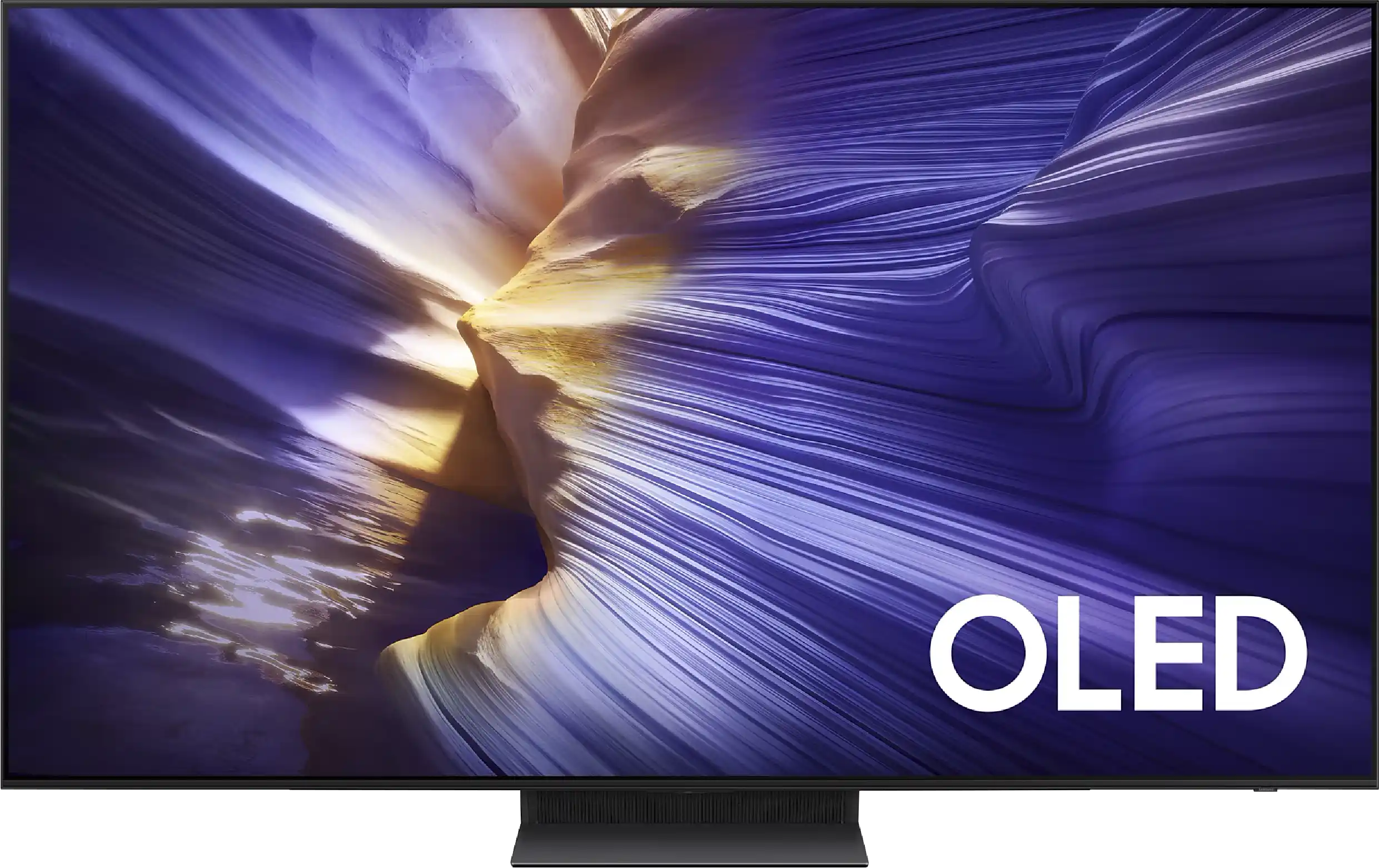
Panel type: WRGB OLED
Resolution: 3840x2160
System: WebOS
Model year: 2024
Complete the survey to find out the result

Panel type: WRGB OLED
Resolution: 3840x2160
System: Tizen
Model year: 2025
Complete the survey to find out the result

Overall rating
8.1
8.1
Movies and series in UHD quality
8.1
8.3
Classic TV, YouTube
8.8
8.7
Sports broadcasts (TV and apps)
8.6
8.5
Gaming on console
9.3
9.6
TV as a computer monitor
7.6
8.6
Watching in bright light
5.7
6.1
Utility functions
9.0
7.2
Apps
8.7
8.7
Sound quality
7.1
7.4
Complete the survey to find out what fits your preferences
Advantages
Reference colour reproduction after calibration
Very good image compliance with the director's intentions
Excellent compatibility with consoles and PCs
Advanced motion smoothing system
Deep and vivid image
Developed WebOs system and "mouse" remote
Stunning black and contrast
High brightness for an OLED TV - 1200 nits peak brightness
Very good motion smoothness - 144Hz OLED display
Low latency - input lag 5ms
Gaming features: 4x HDMI 2.1, VRR, ALLM, Game Motion Plus, etc.
PiP function and great support for external devices with solar remote control
Expanded operating system: Tizen
Pleasant sound with slightly noticeable bass
Disadvantages
Visible tonal transitions
Issues with playback of certain formats from USB.
Subtle degradation in tonal transitions (performs worse than the previous S90D)
Lack of support for DTS:X – an external amplifier is required for full support of this format
Our verdict
Samsung S90F is an excellent representative of the premium mid-range in the world of OLED TVs. We have an organic matrix here that guarantees perfect contrast – and no matter how much LCD manufacturers try with local dimming in Mini LEDs, this black simply cannot be replicated. The S90F shows its class without any compromises. Compared to last year's model, we get a slightly brighter WOLED panel, which in favourable conditions can reach up to 1200 nits. This is a result that suffices for comfortable viewing of HDR materials in most scenes at reference quality – especially on streaming platforms such as Netflix. The picture quality here is very high, regardless of whether we are watching a movie, playing on a console, or streaming a sports broadcast. By the way – versatility is one of the biggest advantages of this model. With 144 Hz refresh rate, very low input lag, and a full package of gaming features (including functional HGiG and the unique Game Motion Plus motion smoother), it's hard to complain about anything here. The Tizen system performed really well on the S90F. It has its limitations – primarily the closed ecosystem and a smaller selection of apps than Google TV – but if you mainly use the most popular services, this shouldn't be an issue. A big plus is also the remote, which can operate most connected devices – even despite the lack of a numeric keypad. There are downsides too. The built-in media player has issues with some formats, and the anti-reflective coating typical of WOLEDs doesn’t handle strong light very well – reflections can be noticeable. We also do not have support for DTS and Dolby Vision, but this is a standard at Samsung that's been expected for years. So is the S90F with a WOLED panel the perfect TV? No – but it really is very close. It is one of the most polished and complete OLEDs in this price range, which can easily handle any content, from a series on Netflix, to console gaming, to a Sunday match.
TV appearance




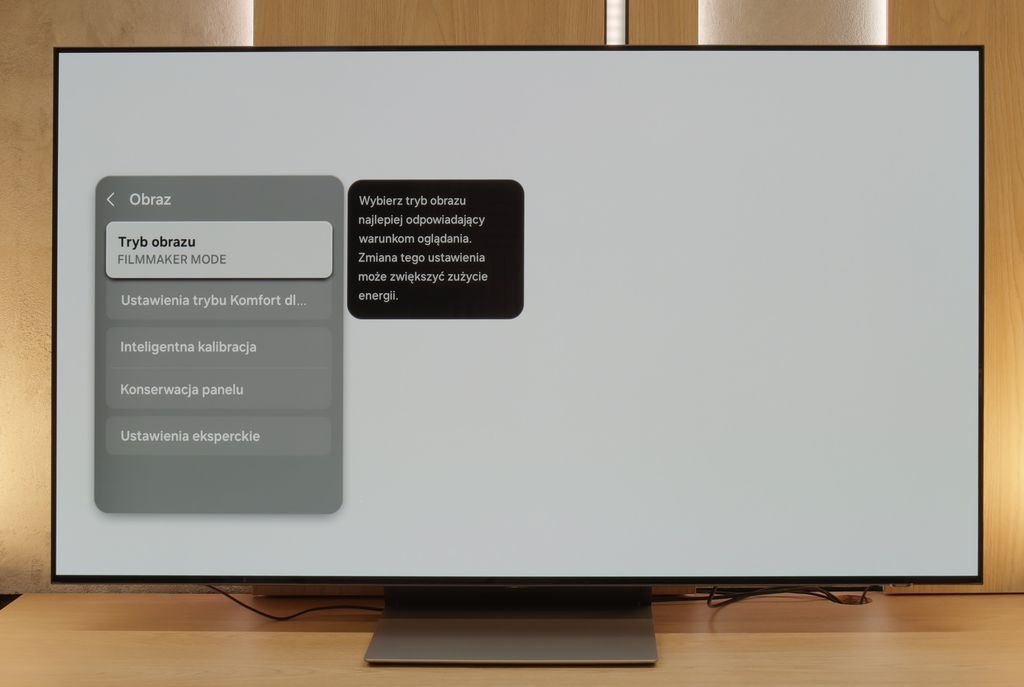
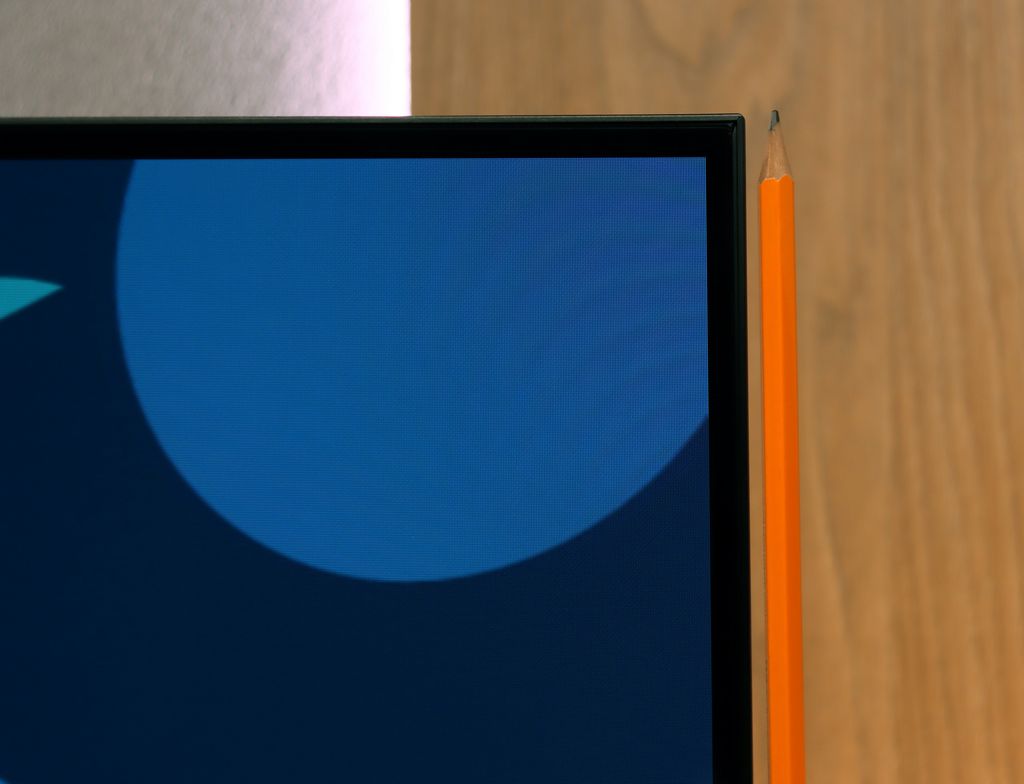
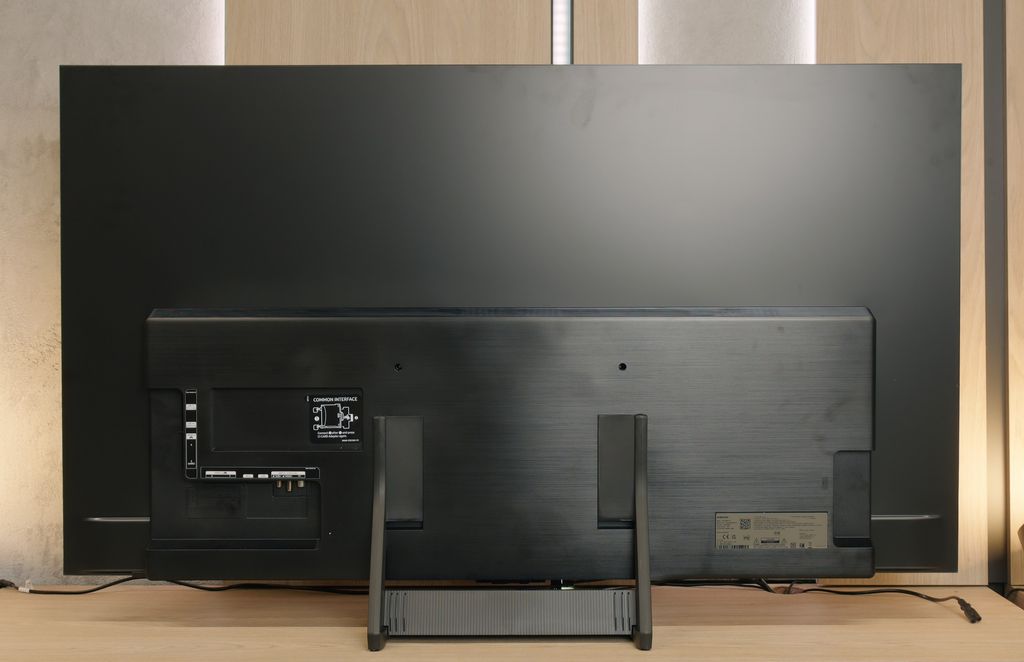
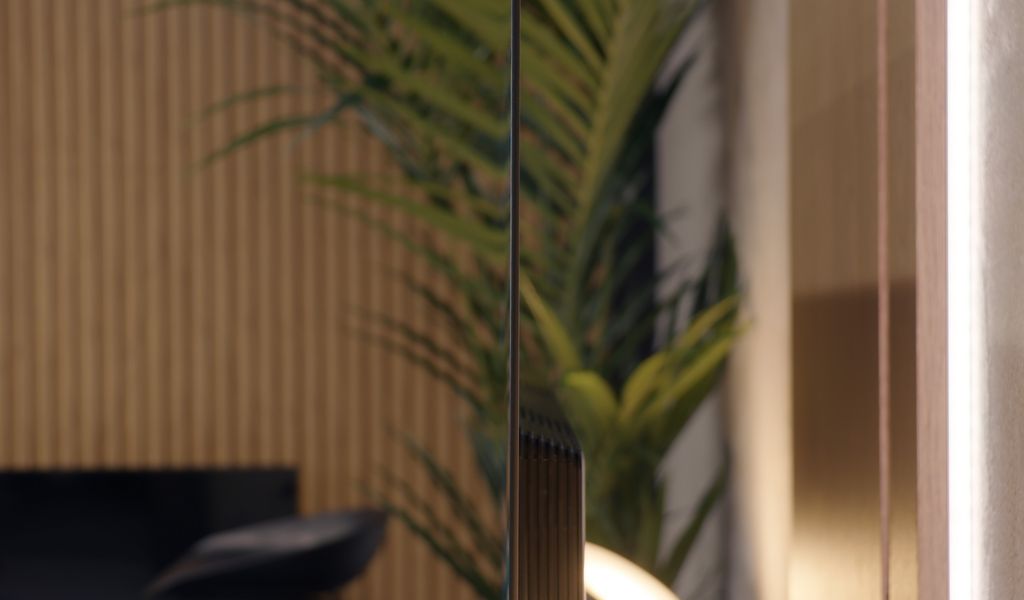
Contrast and black detail
10/10
10/10
Contrast:

Result
∞:1

Result
∞:1

Result
∞:1

Result
∞:1

Result
∞:1

Result
∞:1

Result
∞:1

Result
∞:1

Result
∞:1

Result
∞:1
Halo effect and black detail visibility:

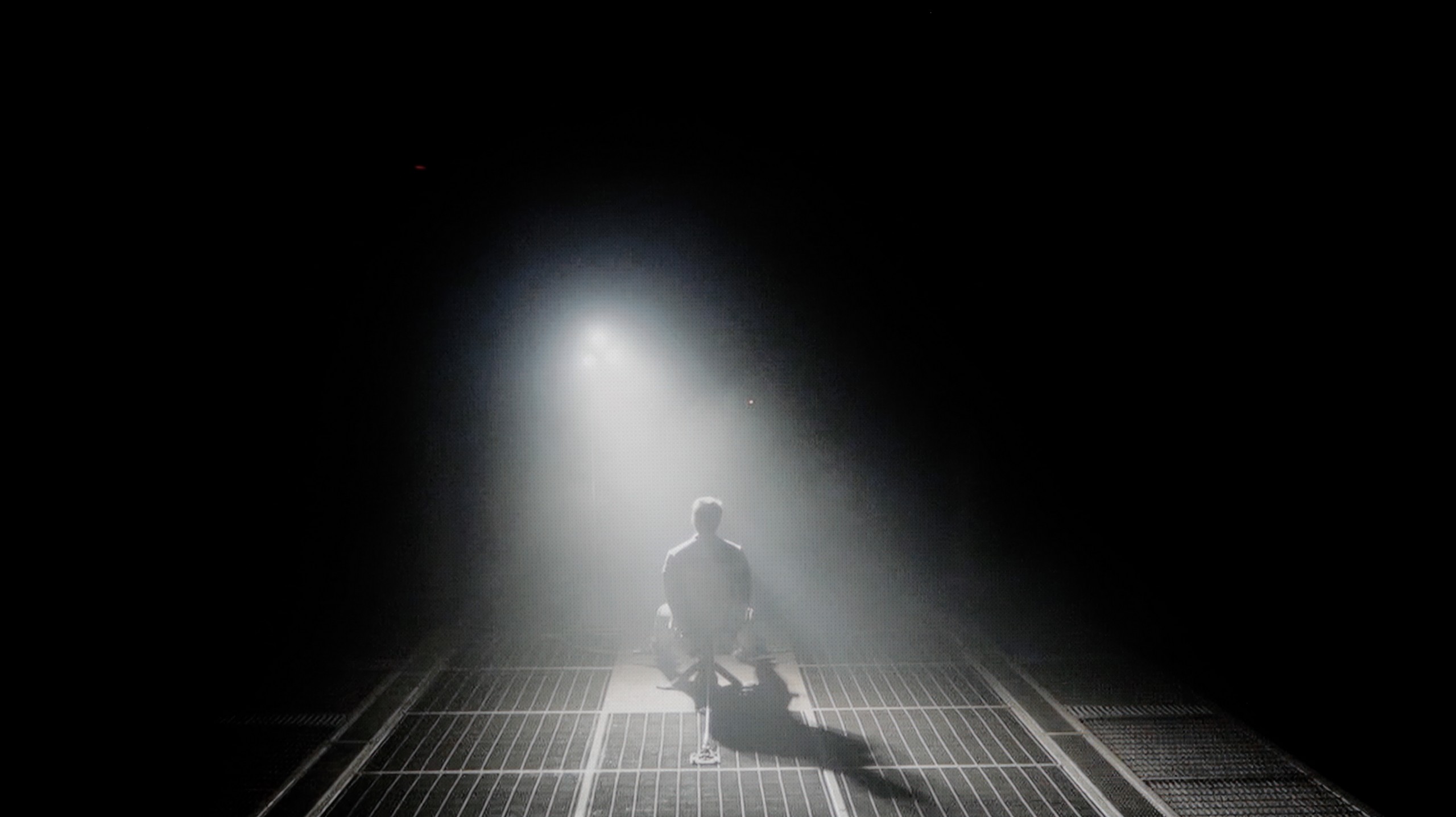
LG B4 uses OLED panels produced by LG Displays. The use of this type of panel gives us perfect contrast and black levels. Thanks to these conditions, the image is incredibly three-dimensional, almost as if it were three-dimensional. The manufacturer's series with the letter "B" has always been the ideal solution for those seeking very good image quality while not wanting to pay extra for features that are only available in higher series. Therefore, these models have been somewhat of a dark horse in this price range, as their competitive pricing primarily allowed them to compete with Mini LED televisions. It’s not hard to say that these models have won these battles due to the absence of characteristic flaws found in LCD receivers with multi-zone backlighting, such as blooming/halo effects or dimming of images with fine bright details. And as we can see in the test scenes from the films "Oblivion" and "Sicario 2," the image quality stands at the highest level. Looking at the first one, we see a spectacular play of lights that, despite their brightness, are perfectly separated from each other. Even the more difficult scene with the helicopter poses no problem for LG B4, showcasing a wealth of detail and the specific colour grading characteristic of this title.
In the case of the Samsung S90F, we are dealing with an interesting situation: nearly all size variants have been equipped with WOLED panels, except for the 65-inch version, which received a QD-OLED panel. In this test, we analyse the version with the WOLED panel produced by LG Display, but the question remains; Does this affect the quality of black and contrast in this part of the test? In practice – it does not. Regardless of the technology used, both panels can produce perfect black and infinite contrast. This is exactly what we expect from any top-tier television. Watching a series in the evening, in a completely dark room, is sheer pleasure. The television easily separates bright elements – such as reflections or background lights – from the deep, dark parts of the image, without creating any halo or brightness issues that high-end LCD televisions still struggle with. This is where OLED technology shows its strength – and the S90F is no exception. When it comes to black and contrast, we can't fault it at all.
HDR effect quality
6.3/10
7.2/10
Luminance measurements in HDR:

Result
664 nit

Result
650 nit

Result
677 nit

Result
662 nit

Result
410 nit

Result
1099 nit

Result
1177 nit

Result
1252 nit

Result
1183 nit

Result
577 nit
Scene from the movie “Pan” (about 2800 nits)


Scene from the movie “Billy Lynn” (about 1100 nits)

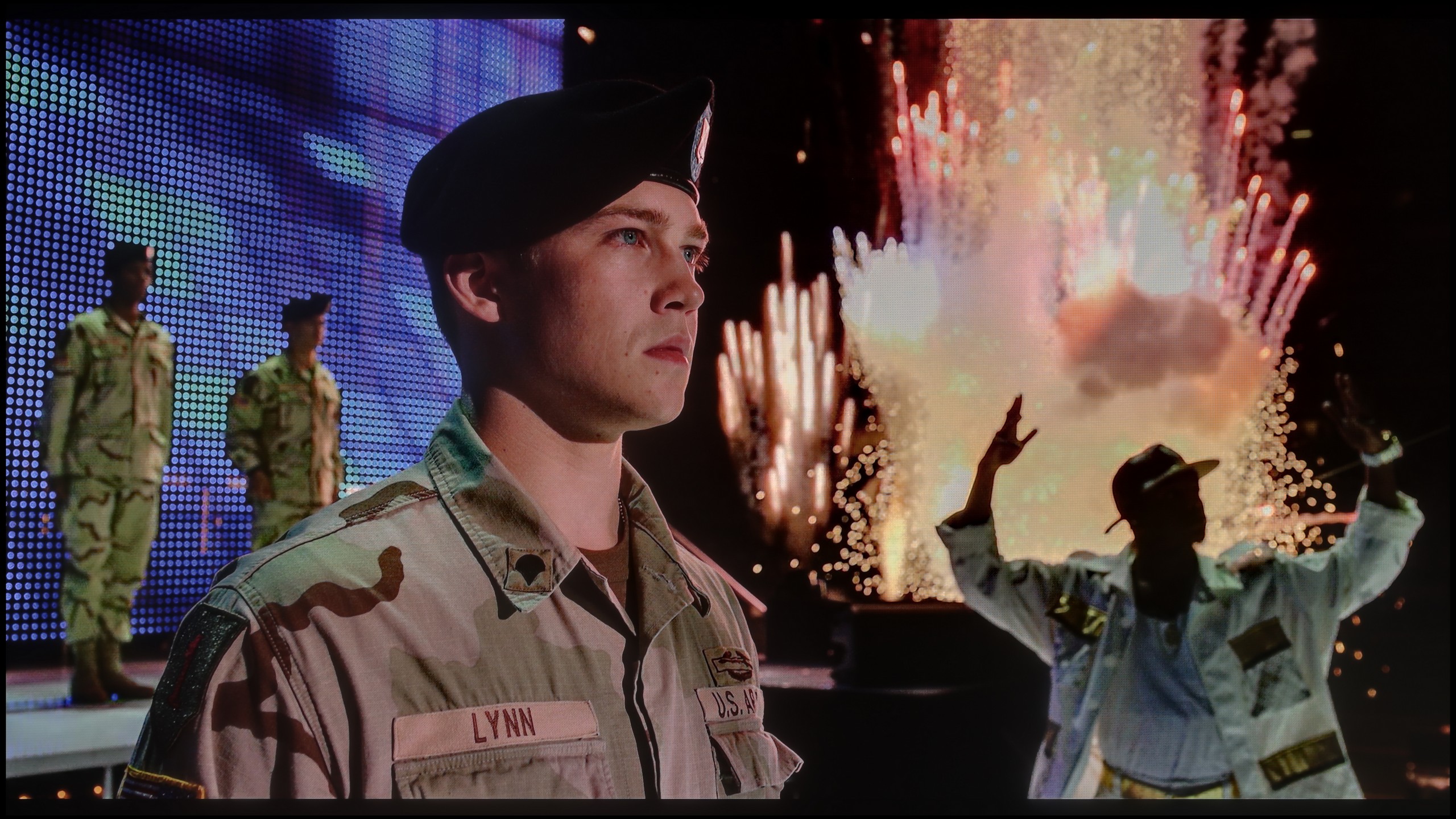
Static HDR10


Dynamic: Dolby Vision
Dynamic: HDR10+


HDR luminance chart:
SAMSUNG S90F (WOLED)
Luminancja HDR
Luminance of RGB colors
LG 55 B4
Luminancja HDR
Luminance of RGB colors
The brightness results in HDR materials LG B4 are very good. It is true that none of them exceed 1000 nits, although the luminance stability is excellent and looks practically the same in every scenario. The only moment where the tested television performs worse is the last scene, although this should not come as a surprise. Large frames filled with a lot of white have always been, and will likely continue to be, somewhat of a weakness for OLED televisions. However, the combination of perfect contrast, black levels, and brightness in the LG B4 allows for a full spectrum of the HDR effect. Additionally, the incredibly high coverage of the DCI-P3 colour gamut, which reached 99%, deserves recognition. As a result, colours look incredibly vibrant and stunning.
Does the S90F handle not only blacks but also bright parts of the image? Definitely. The stories about OLEDs as "dark screens" can slowly be regarded as myth. The Samsung S90F, like the LG C5 based on a very similar panel, achieves brightness exceeding 1000 nits. This is a value more than enough to enjoy impressive and dynamic HDR images – both in movies and series. Most of the scenes we tested look stunning, with well-defined highlights and high contrast. Of course, OLED technology still has its limitations – in very bright, full-screen sequences, such as the test card from the movie The Meg (photo 5), the television may noticeably dim the image. However, it should be emphasized that such scenes are rare. It can be said that the HDR effect is good enough that even mid-range OLED models like the S90F can provide a cinematic experience in the home living room.
Factory color reproduction
8.4/10
7/10


Factory Mode
After calibration


Factory Mode
After calibration
The best factory mode prepared by the manufacturer is "Filmmaker," and we used it throughout the entire testing procedure. We must admit that the unit we received straight out of the box had quite decent colour reproduction. The biggest issue in both SDR and HDR content turned out to be white balance. In the former, there was a strong dominance of red, resulting in a noticeable yellow tint in the displayed image, particularly evident on skin tones and whites. In high-quality materials, this colour was also pronounced, but due to a lack of blue, there were also signs of green visible. Besides these shortcomings, we also encountered issues with greyscale and the colours themselves.
Samsung S90F, like most modern televisions, offers many picture modes, but – following our testing tradition – we checked it out in the best one, which is the Filmmaker mode. Thanks to this, the image looks much more natural than in the default, often oversaturated settings. It was neither overly saturated nor artificially dimmed – simply closer to what one should see. Of course, “more accurate” doesn’t mean “perfect”. Unfortunately, our S90F had significant issues with white balance, particularly in the blue color range, resulting in a slightly yellowish filter being applied to most scenes. Someone might say it looks more “filmic” – because it’s warmer – but let’s not kid ourselves, George Lucas didn’t film Star Wars in sepia 😉 (you’ll find a comparison with the scene below as always).
Additionally, in HDR materials, there was an issue with brightness management. The EOTF curve showed a clear “spike” in brightness – the television brightened the image more than it should have, causing some effects to look too intense and deviating from the reference. Fortunately, some of these problems can be eliminated through professional calibration – you’ll read about its effects later in the review.
Color reproduction after calibration
9.3/10
9.2/10

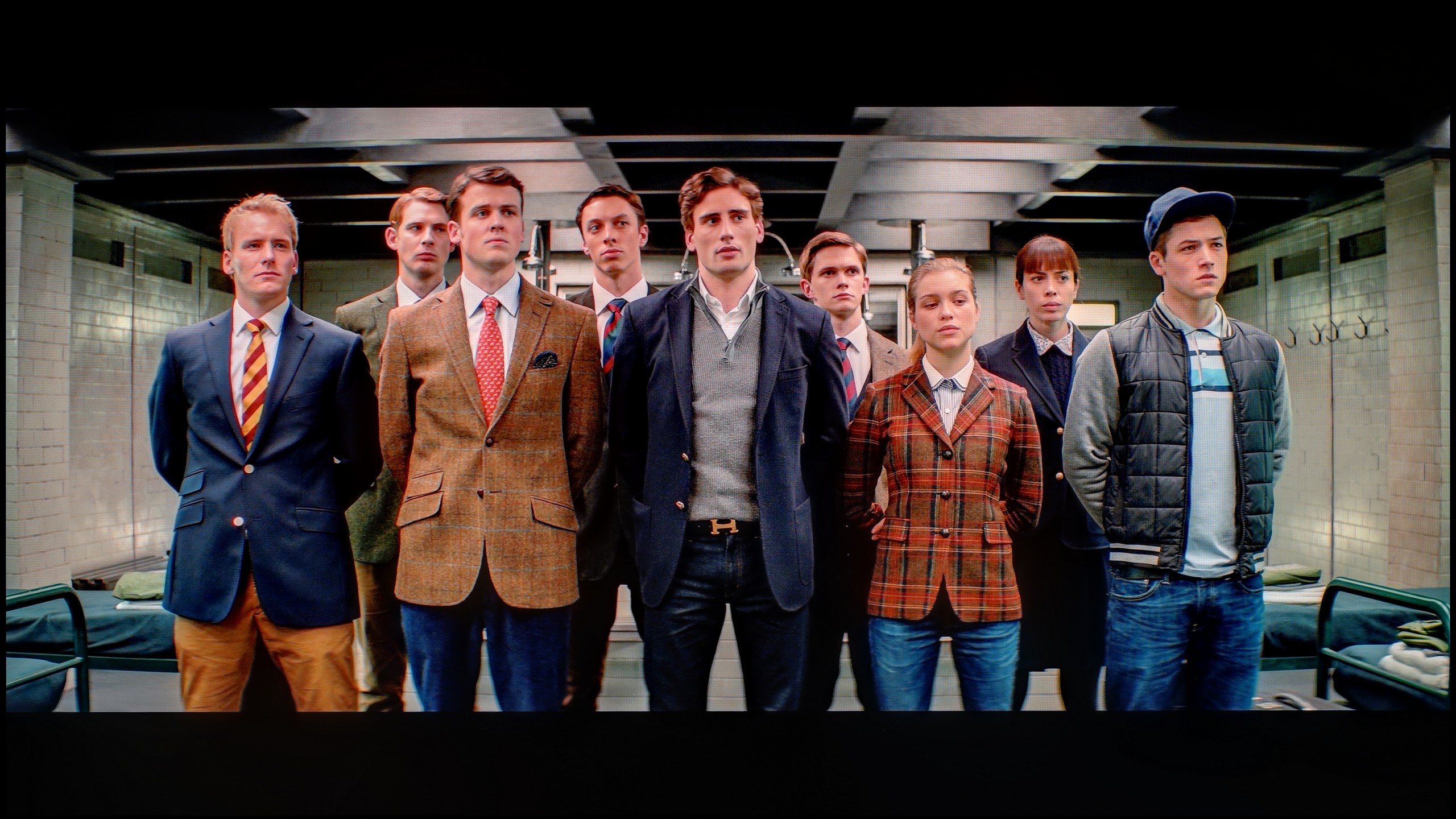

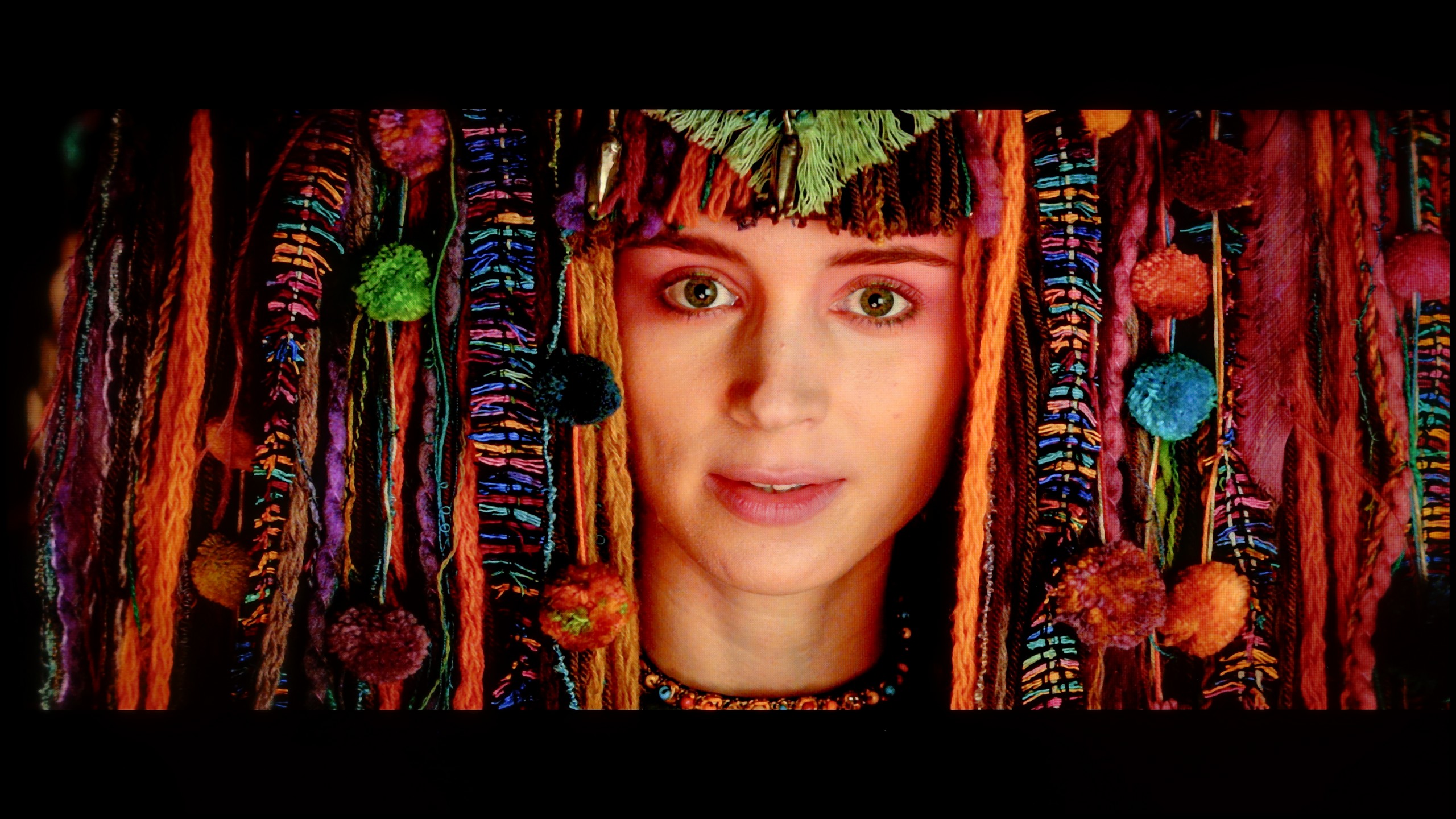
LG B4 has been providing very advanced calibration tools in its TVs for years. We can even say that as the only manufacturer on the market, it allows for such deep intervention in image adjustment. Thanks to these, we were able to calibrate the device so well. The evidence of this is the extremely low deltaE errors, which can be said to stand at a reference level. Both SDR and HDR materials now look exactly as the film director intended. It is no coincidence that TVs of this brand are most often used as preview screens for various graphic or post-production studios.
After calibration, we managed to eliminate practically all the previously mentioned errors. Older movies in SDR quality finally look like they should – without the sepia effect or artificial aging of the image. The atmosphere of the classics is back in place (no thanks needed, Star Wars fans), and the colours no longer resemble an Instagram filter.
One of the key changes was also the improvement of brightness characteristics in HDR content. We managed to control the EOTF curve in almost a reference manner. Admittedly, the most demanding users may detect minimal deviations in brightness, but honestly – most viewers won't even notice that. And it's no surprise because the vast majority of errors fall below the ΔE 3 value, which is below the threshold of visibility. After calibration, the S90F (WOLED) becomes a truly excellent display – one on which you can enjoy nearly perfect image quality.
Smoothness of tonal transitions
7.4/10
7.3/10

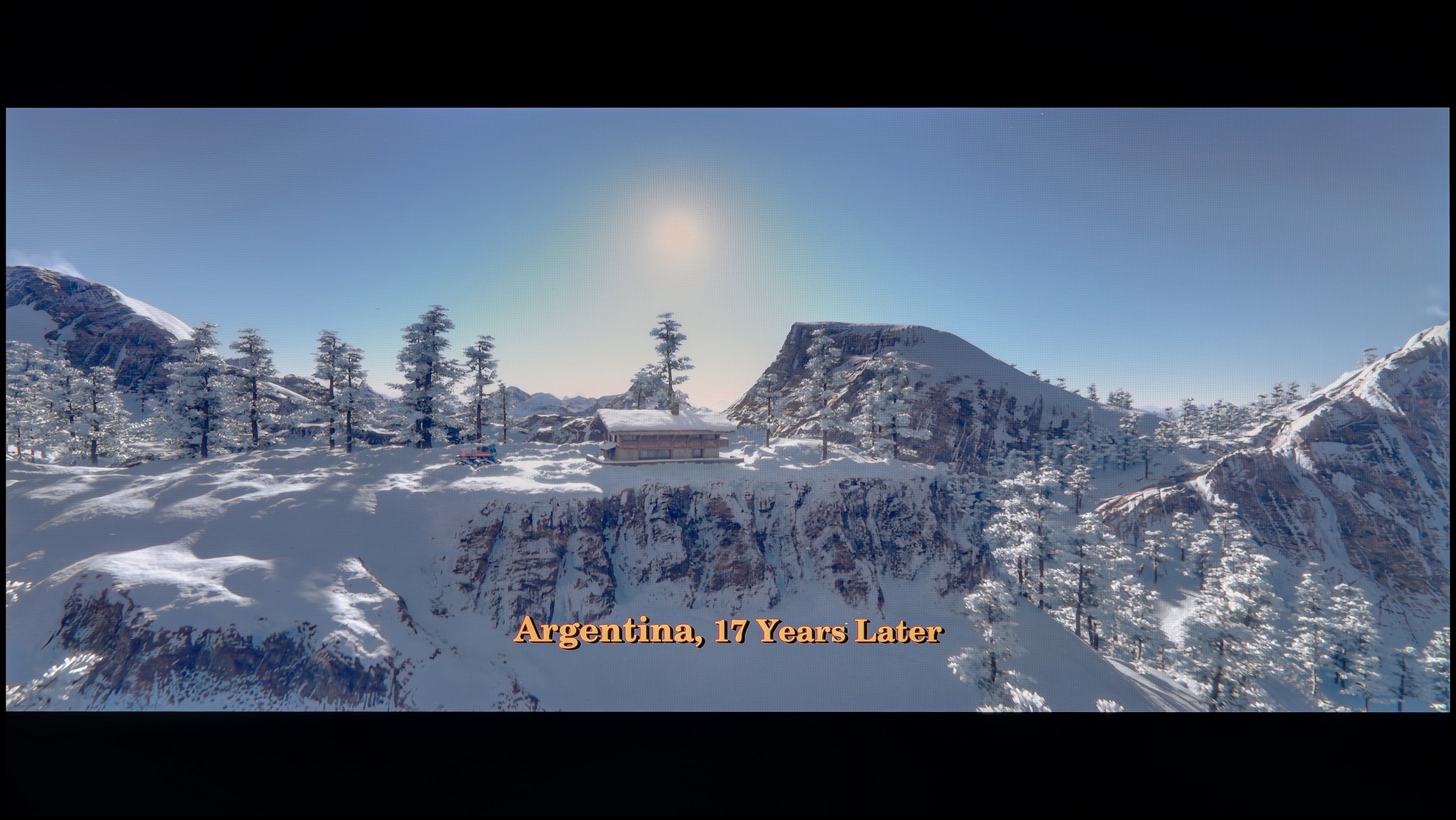



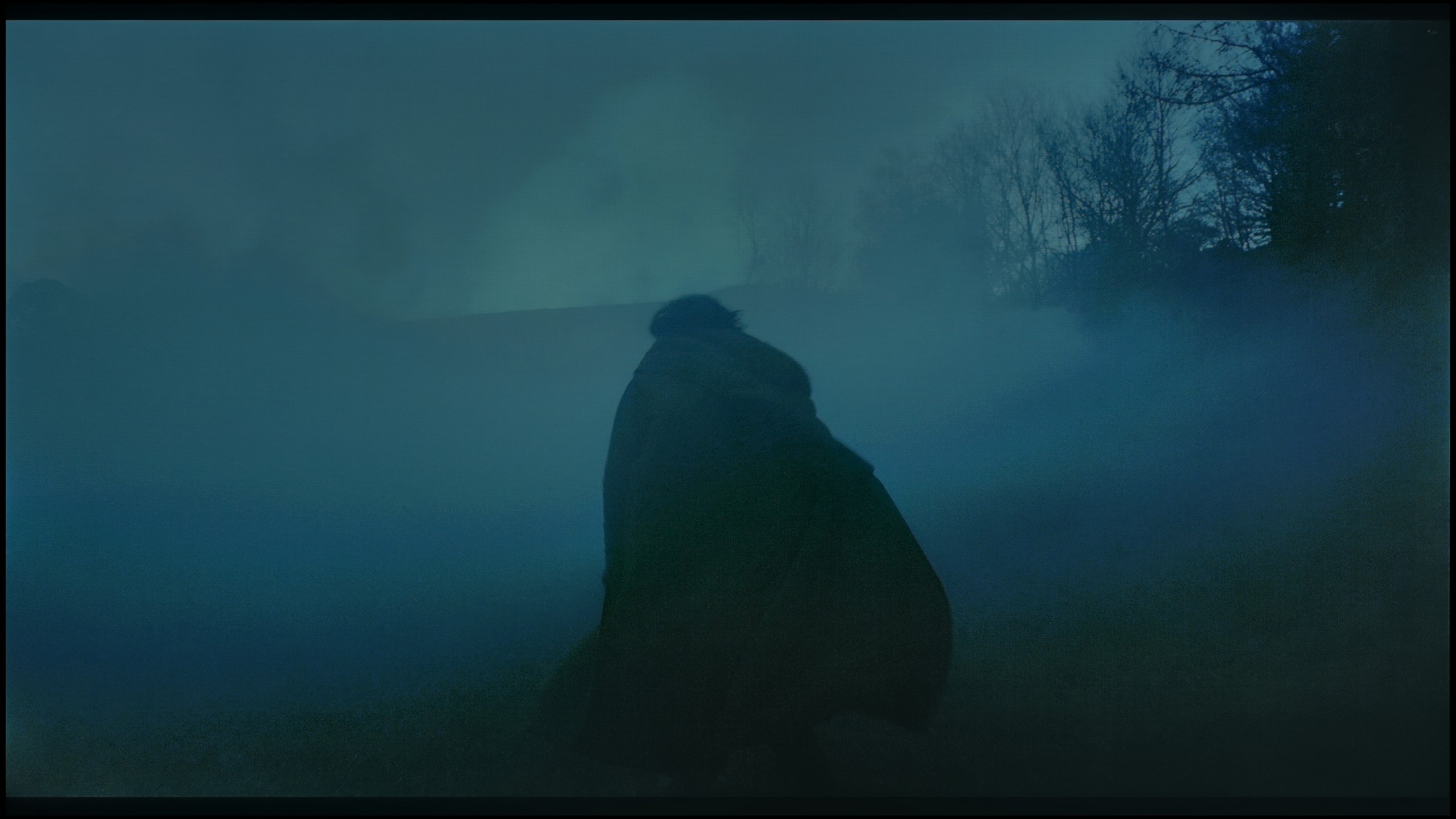






The smoothness of tonal transitions, often overlooked in various tests on competitive portals, is an equally important aspect of image quality assessment. It is particularly crucial when watching materials that feature a wealth of colours and many intricate effects, where textures blend together. This often leads to what's known as colour banding, or a lack of smooth gradation. The tested television handles tonal transition smoothing quite well. However, it's worth noting that it has its weaker moments, such as the bright colourful sky in the film "Kingsman" or "The Martian." These, however, are not issues that detract from the viewing pleasure. Therefore, we assess the quality of tonal transitions in LG B4 positively.
No and here we must honestly admit – the S90F has somewhat let us down. Compared to last year's S90D model with a WOLED panel (very similar to the one used this year), this year's Samsung performed worse. And this is not only against its main competitor, LG C5, but even when compared to its older brother. The biggest issues arise in dark scenes, where difficulties with smooth colour transitions are noticeable – the screen slightly steps the tonal transitions, causing some sections to lose their naturalness. We’re not sure what exactly went wrong – perhaps it's a software issue or a different processing algorithm. It's a shame, because we hoped that the level from last year would at least be maintained. Unfortunately, it's a step backwards.
Image scaling and smoothness of tonal transitions
7.9/10
7.5/10
Smooth transition function

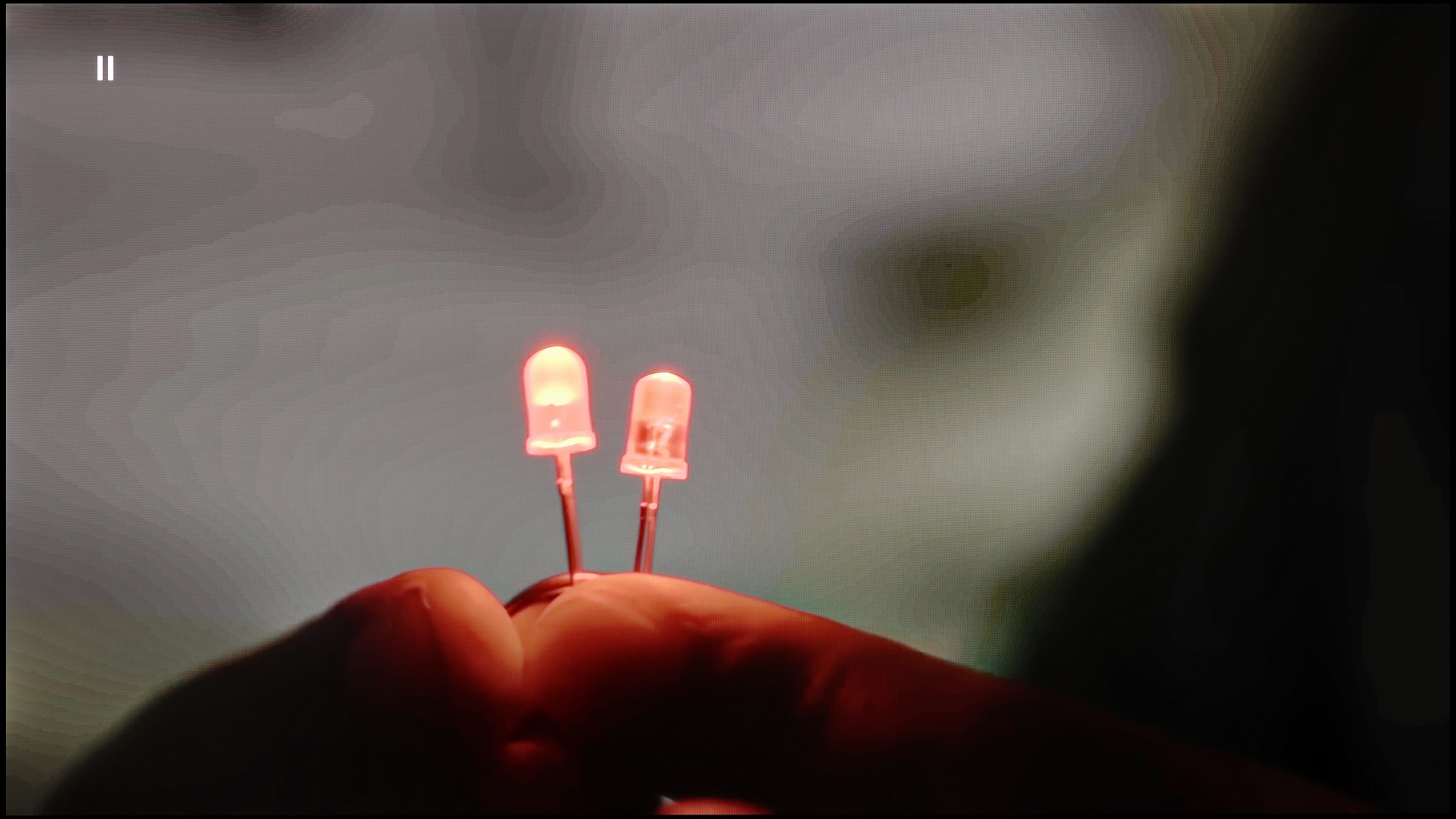
Image without overscan on the SD signal

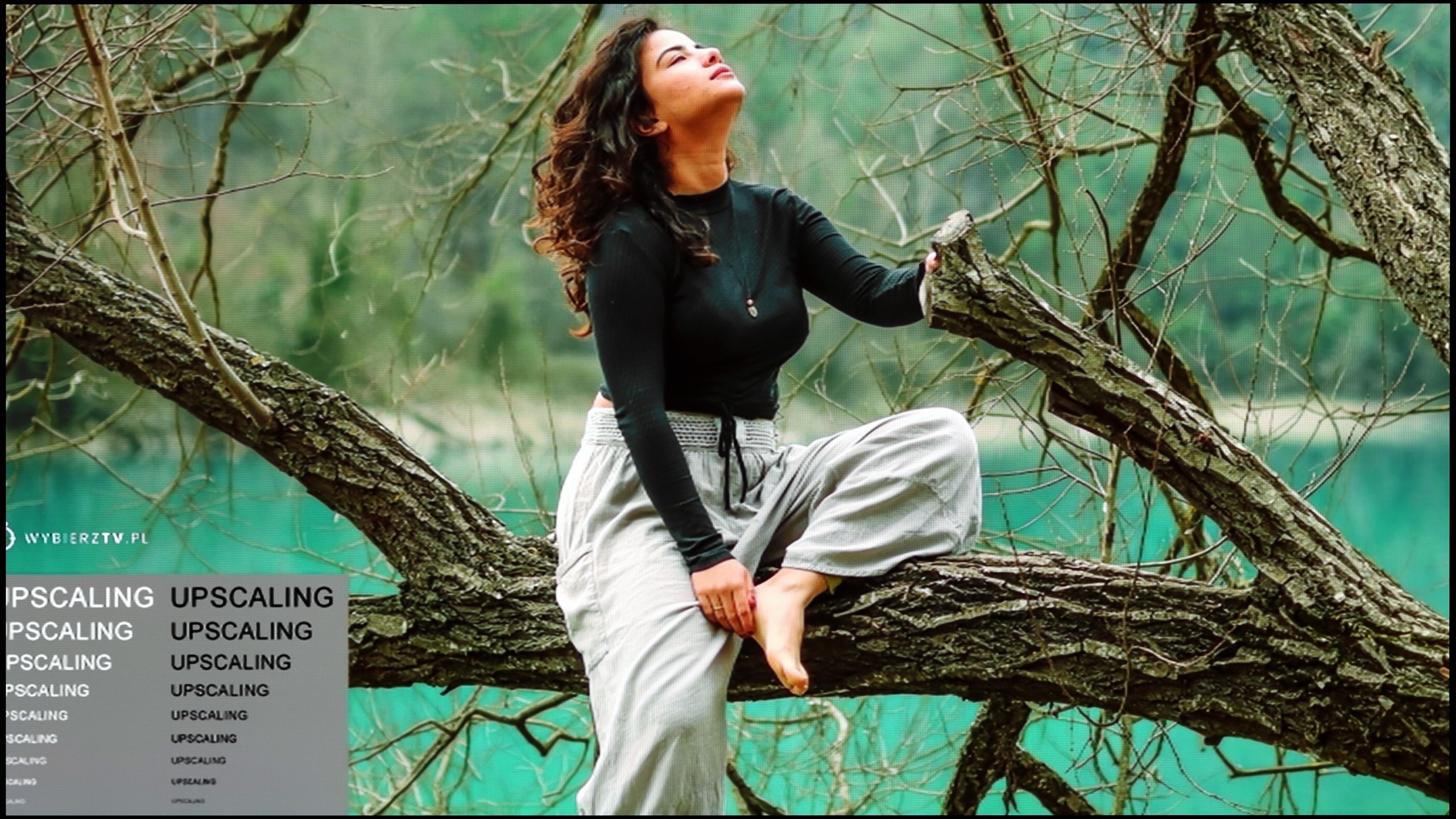
In this paragraph, we will take another look at the tonal transition smoothing feature, but we will also check how the TV handles lower quality material. As we have managed to check, the setting responsible for smooth gradation works quite effectively, although it has its weaker moments. While the feature works well with SDR content, it becomes less useful with HDR content. Even at the lowest of options, it blurs essential details, so we advise against using it.
The image scaling on LG B4 is rated fairly moderately positively. Although there is no edge splitting, the image itself is naturally "soft". We can change this by adjusting the sharpness slider.
Digital Image Processing in S90F:
Fortunately, Samsung, like in most of its models, manages to effectively tackle the unwanted posterisation effect in the S90F. The function responsible for this element is noise reduction, which does a pretty good job of smoothing tonal transitions and eliminating unnatural colour blending – of course, within its capabilities. Unfortunately, it works quite aggressively, so using it comes with trade-offs. In addition to improving gradation, it can also remove film grain or slightly soften facial features. In this case, the choice is yours – do you prefer a more "clean" image, or do you care about preserving the original texture of the material.
Image Scaling in S90F:
In this year's model, Samsung has implemented its proprietary AI processor – NQ4 Gen3, which really handles upscaling quite well. In our test scenes, the TV effectively "pulled up" lower quality towards artificial 4K – the image was more enjoyable to view, and the differences in sharpness between native and scaled content were minimal. Unfortunately, behind all this AI marketing façade lies a certain shortcoming. The S90F struggles with overscan. If you reach for truly archival material – e.g. a VHS tape of your parents' wedding – you have to reckon with the fact that the lower part of the image may get cut off. The function to adapt the image to resolution simply does not work as it should here.
Blur and motion smoothness
8.5/10
8.5/10

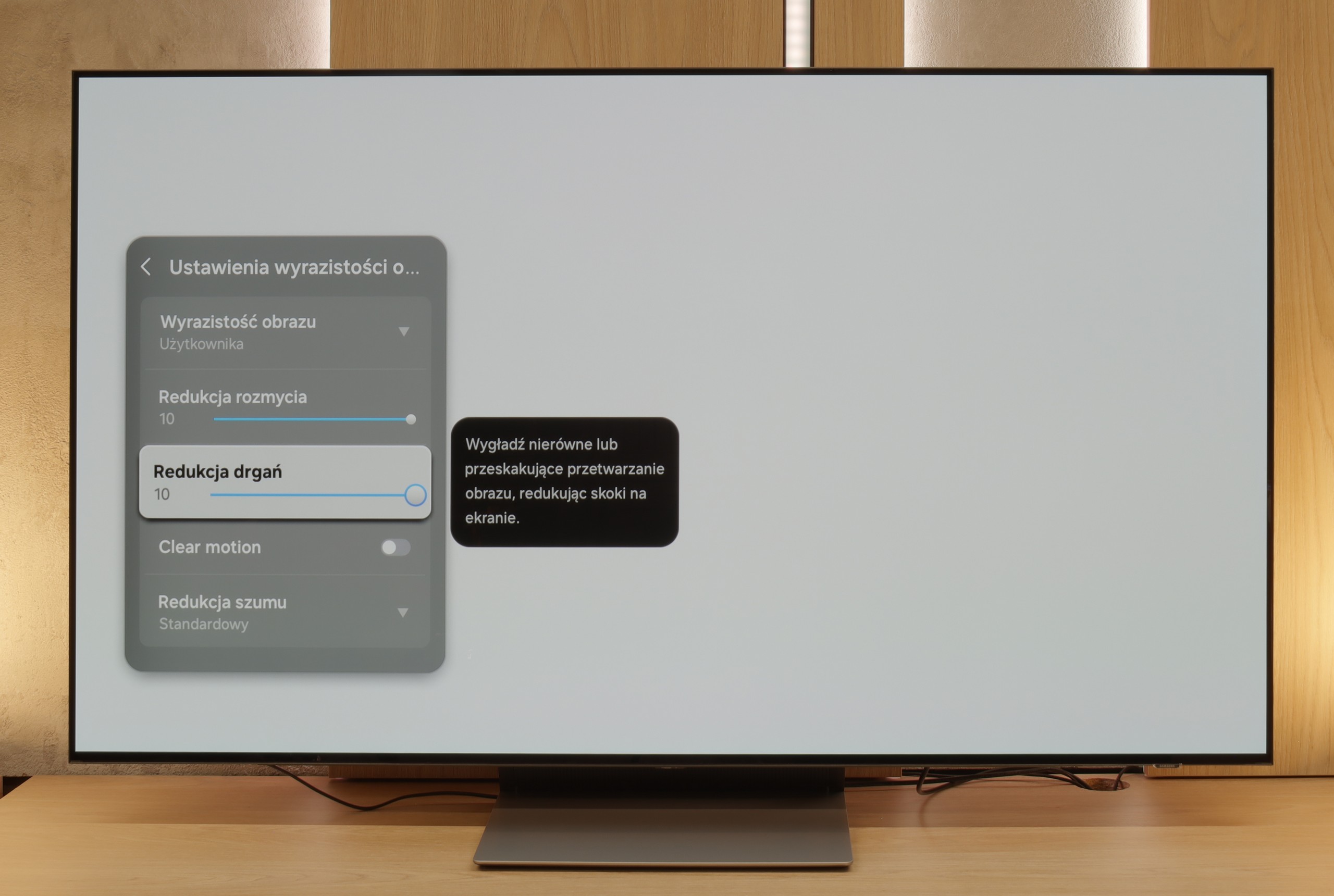
Blur (native resolution, maximum refresh rate):



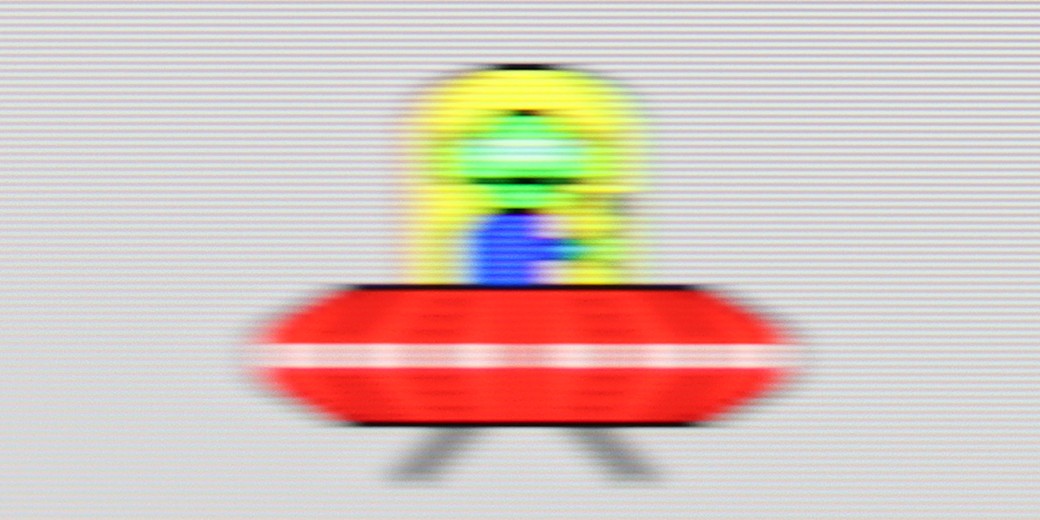

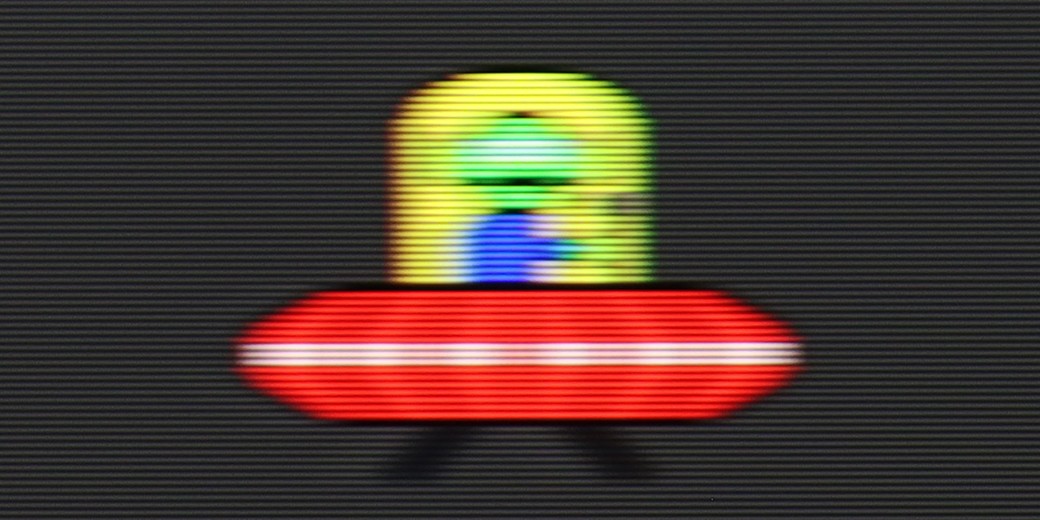
Blur (BFI function enabled):



Image flickers in this mode
The maximum refresh rate we can set on the LG B4 is 120 Hz. This is the absolute minimum for those who require high image smoothness. The manufacturer has implemented a multi-level motion smoother called "TruMotion". It has been divided into two separate sliders that adjust the sharpness of moving images (De-Blur) and stuttering (De-Judder). Both sliders can be set in the range from 0 to 10, with each level affecting the degree of smoothness, so everyone can find their sweet spot.
The LG OLED B4 panel features an average response time of 0.1 ms (which directly results from our measurements), allowing for an incredibly clear image, unattainable for LCD TVs, which have response times of even several milliseconds. This can be clearly seen in images from the "UFO Test", showing no trace of blur trailing behind the object.
S90F really handles motion excellently – after all, it’s an OLED with a 144 Hz panel, so sports and games look absolutely stunning on it. The image is smooth, clear, and there’s no room for ghosting or blurring, which can sometimes plague cheaper LCDs.
The TV also comes equipped with motion smoothness settings that allow you to customise everything to your liking. We have motion blur reduction and judder reduction – you can set it so that the image is super smooth (even to the point of looking a bit soap opera-like), or more cinematic, with the classic “jumpiness” of 24 frames. The choice is yours, Samsung imposes nothing.
Console compatibility and gaming features
10/10
9.5/10
- ALLM
- VRR
- VRR range40 - 120Hz48 - 144Hz
- Dolby Vision Game Mode
- Correct implementation of HGIG
- 1080p@120Hz
- 1440p@120Hz
- 4K@120Hz
- Game bar

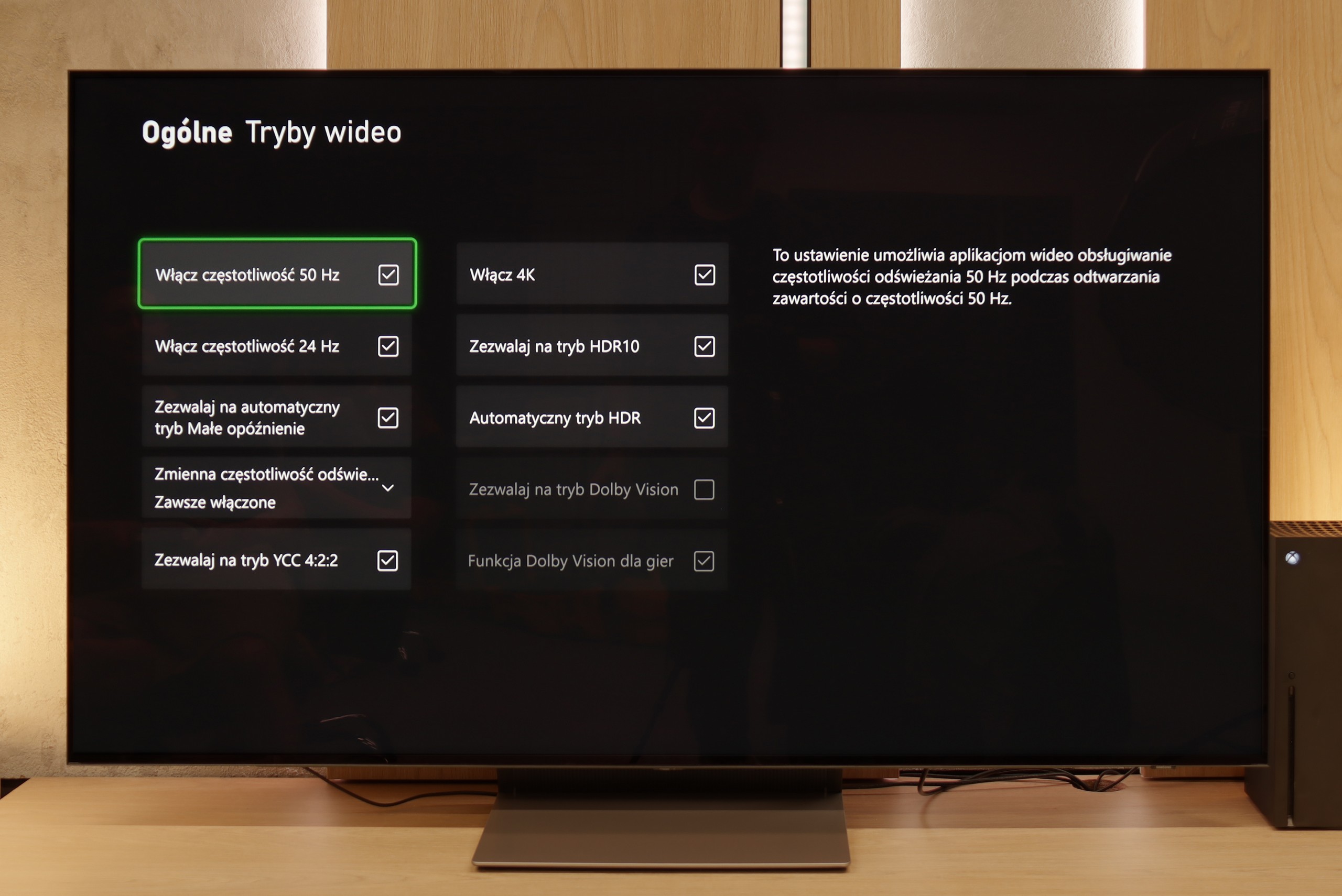

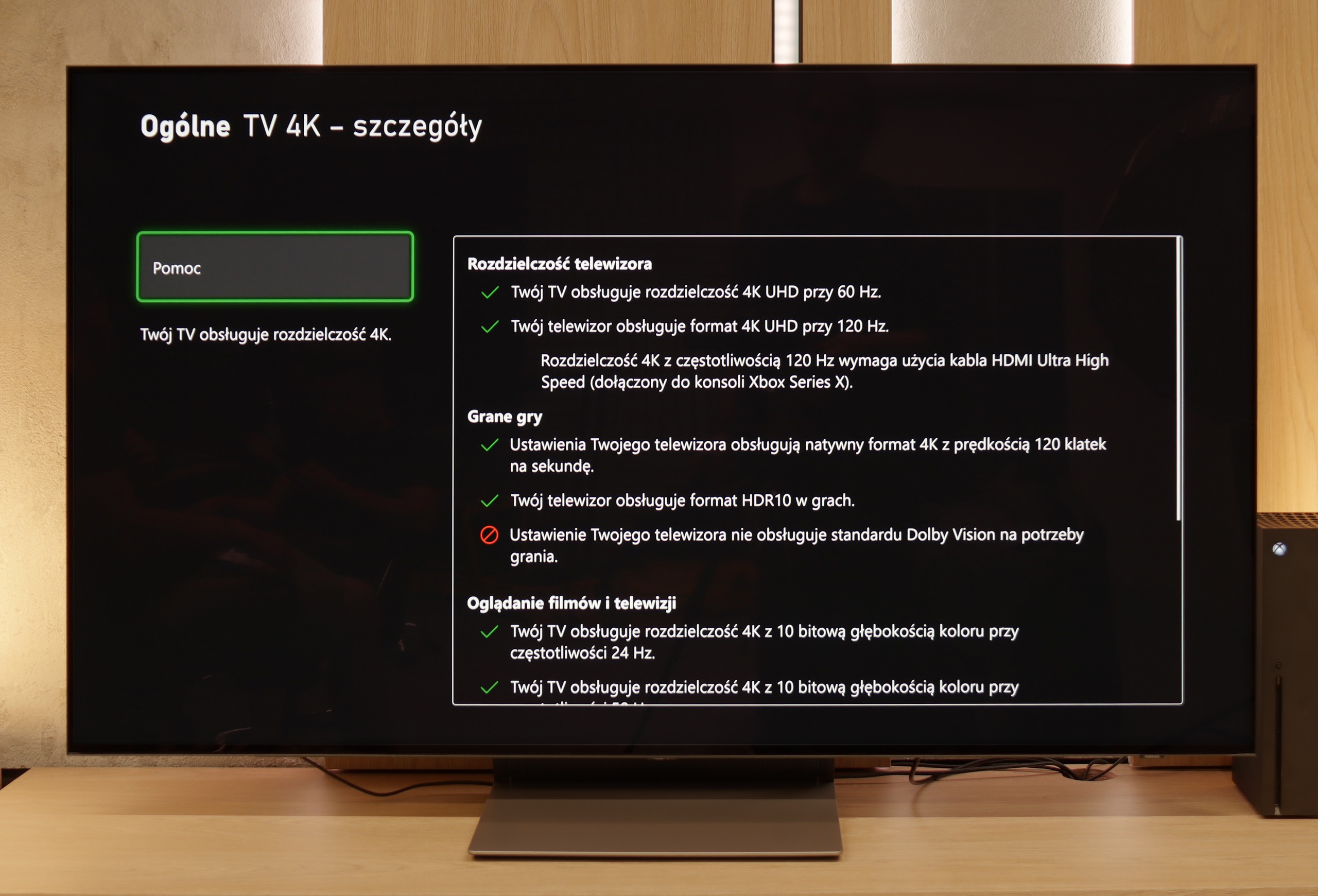

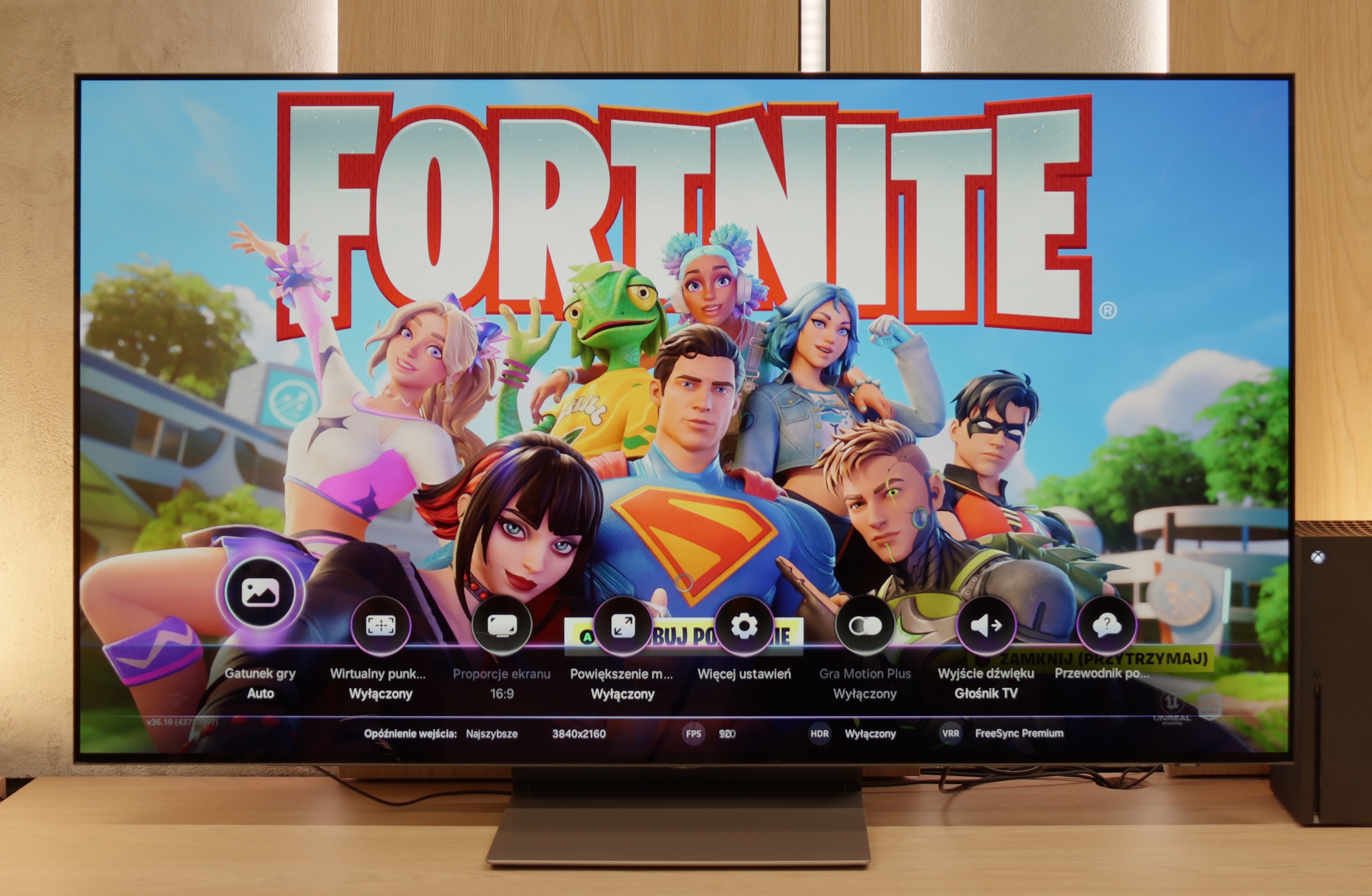


The LG B4 television is equipped with four full-fledged HDMI 2.1 ports with a full bandwidth of 48Gbps. All functions corresponding to this standard activated without any issues, and throughout the entire testing procedure, they caused no problems. The combination of such extensive functionality and low input lags leads us to say that the tested television is truly designed for gaming. This is not surprising, considering that the manufacturer has always placed great emphasis on this. Therefore, we can enjoy both a properly implemented HGIG mode and gameplay in Dolby Vision with low latency. Such a tandem will surely attract the attention of all passionate gamers for whom quality is the most important.
A standard feature in televisions from the Korean manufacturer is also the implementation of GameBar, allowing for quick adjustments of settings "on the fly," without the need to exit the game. It also enables image adjustments for individuals with visual impairments, which is an extremely nice touch. Another important piece of information is that when the VRR technology is turned on, we will not experience a drop in contrast. This is, of course, due to the construction of the panel and the lack of conventional backlighting. However, it is normal for shades of grey to flicker slightly, although this is a characteristic feature of this function regardless of the manufacturer and the television.
In summary: The LG B4, like all OLEDs from the manufacturer equipped with 120Hz panels and HDMI 2.1 ports, creates a harmonious whole with the console. In practice, it is a complete television, and if we expect the highest possible efficiency in gaming, the B4 will be the ideal choice.
When it comes to gaming features – the S90F has absolutely nothing to complain about. Aside from the lack of Dolby Vision, which is already the norm for Samsung. The television operates at 144 Hz, has four HDMI 2.1 ports, so you can easily connect more than one console or PC. Onboard, we also find Game Bar – a practical tool that allows you to quickly preview picture settings, VRR status, ALLM mode, and other useful options. Game Motion Plus deserves special mention – Samsung's proprietary motion smoother that actually works sensibly in games. The image appears smoother, but without any artificial effects or slowdowns.
It's also worth mentioning the HGiG feature, which – and this may be a slight surprise – works correctly. We bring this up because Samsung clearly messed something up in one of the recent updates, and in some models, the option responsible for HGiG simply... disappears from the menu. Setting it up becomes almost impossible. Fortunately, our S90F unit did not have this issue, but the situation is dynamic, so it's worth keeping this in mind and regularly checking for new software versions and information from the manufacturer.
Input lag
10/10
10/10
SDR
HDR
Dolby Vision
Delay times for LG B4 are incredibly low in every scenario. Even the most passionate gamers will certainly appreciate the very low input lag of just 5 ms at demanding settings of 4K 120 Hz with HDR. It's also worth noting that the latency at the same settings, but with Dolby Vision HDR enabled, remains unchanged, which is not as obvious with the competition. Therefore, it deserves the highest rating and recommendation.
Input lag in the S90F is at a level that's practically monitor-like. Under the best conditions, it achieved a score of 5 ms, which is an absolutely stunning result – even a benchmark for the most demanding gamers. Whether you're playing fast-paced shooters, fighting games, or simply need instant response – the S90F does not disappoint in this regard at all.
Compatibility with PC
7.6/10
8.6/10

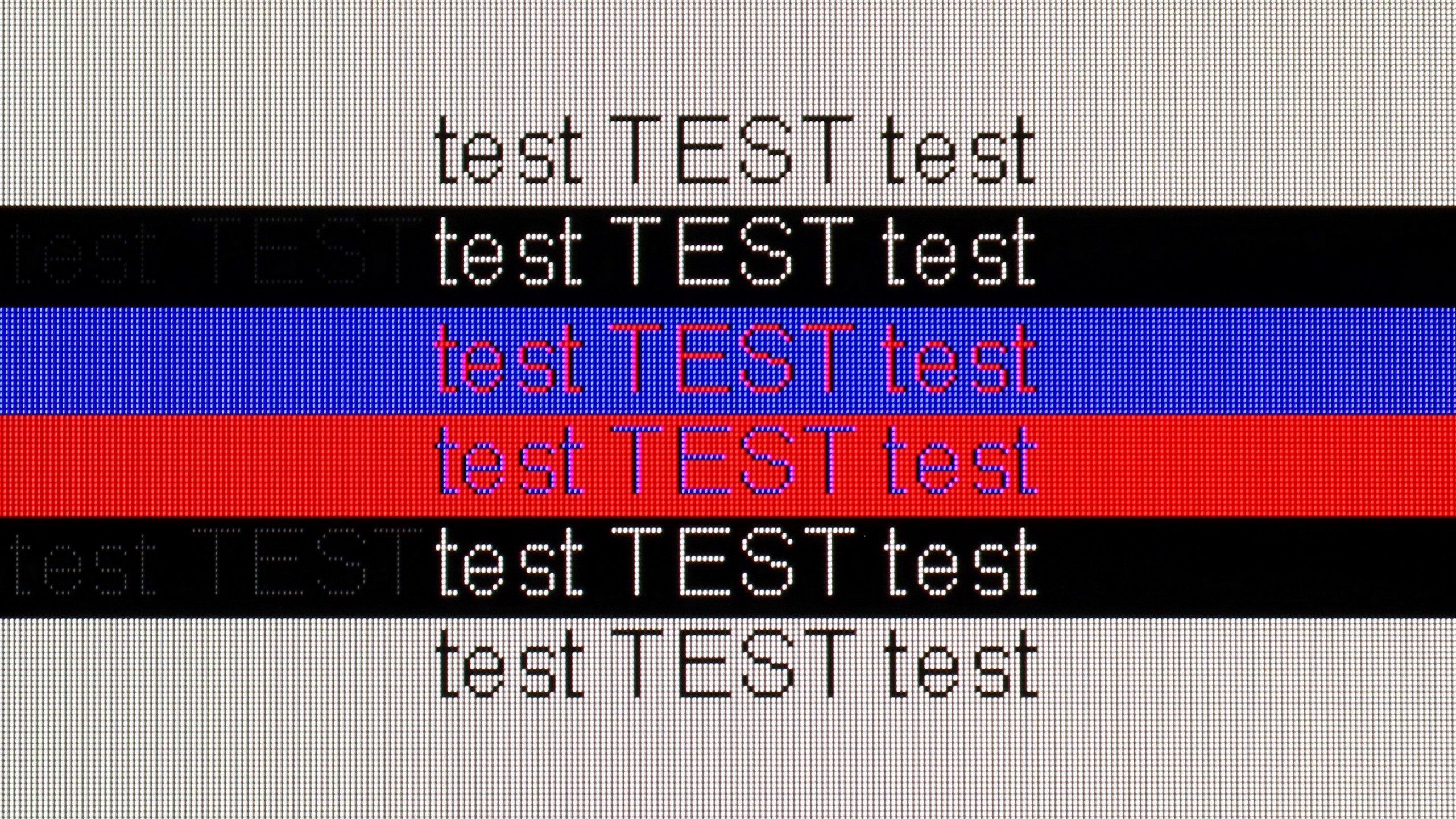
LG B4 paired with a PC performs excellently due to its very low latency of just 13.5 ms, which is virtually instant response between the mouse, the eye, and the screen. A crucial aspect of working on a display is readability, which in the case of the tested television is very good. However, it's worth noting that to achieve sharp fonts, you need to enable the passthrough option in the settings.
The RWBG pixel layout does not significantly affect the display of fonts or letters, which is a notable advantage over Samsung's QD-OLED matrices. Users of both Windows and macOS equipped computers will certainly be pleased with the performance on the tested television screen.
S90F is a great tool for both gaming on PC and daily work. Gamers can rest easy – the TV effortlessly supports image synchronisation with NVIDIA graphics cards thanks to G-Sync, and the 144 Hz refresh rate combined with very low input lag only confirms this. S90F also excels as a monitor for working with text. Of course, the readability of fonts may be slightly compromised by the characteristic pixel structure in the RWGB arrangement, but this is a topic well known primarily to those who work with a lot of text, code, or Excel spreadsheets. For most users, this will be perfectly acceptable.
Viewing angles
7.4/10
7.4/10
The undeniable advantage of OLED panels is their efficiency in group viewing, meaning from different angles. LG B4 maintains very good contrast, colour saturation, and fidelity. While it may not match organic TVs supported by MLA technology, it cannot be said that anyone who purchases the device has been dissatisfied with the results. However, it should be noted that at sharp angles, a slight greenish tint can be observed. This is a characteristic feature of WRGB panels from LG, without the aforementioned micro-lens technology, and unfortunately, there is nothing that can be done about it.
The viewing angles on the S90F are very good, although it must be honestly admitted that they are slightly inferior to the 65" version with the QD-OLED panel. Nevertheless, the picture quality at wide angles performs very well – colours remain vivid, and brightness doesn’t drop dramatically when viewed from the side. There's no need to move the TV closer to see a clear image. For most users, this level is more than sufficient.
TV efficiency during daytime
5.7/10
6.1/10

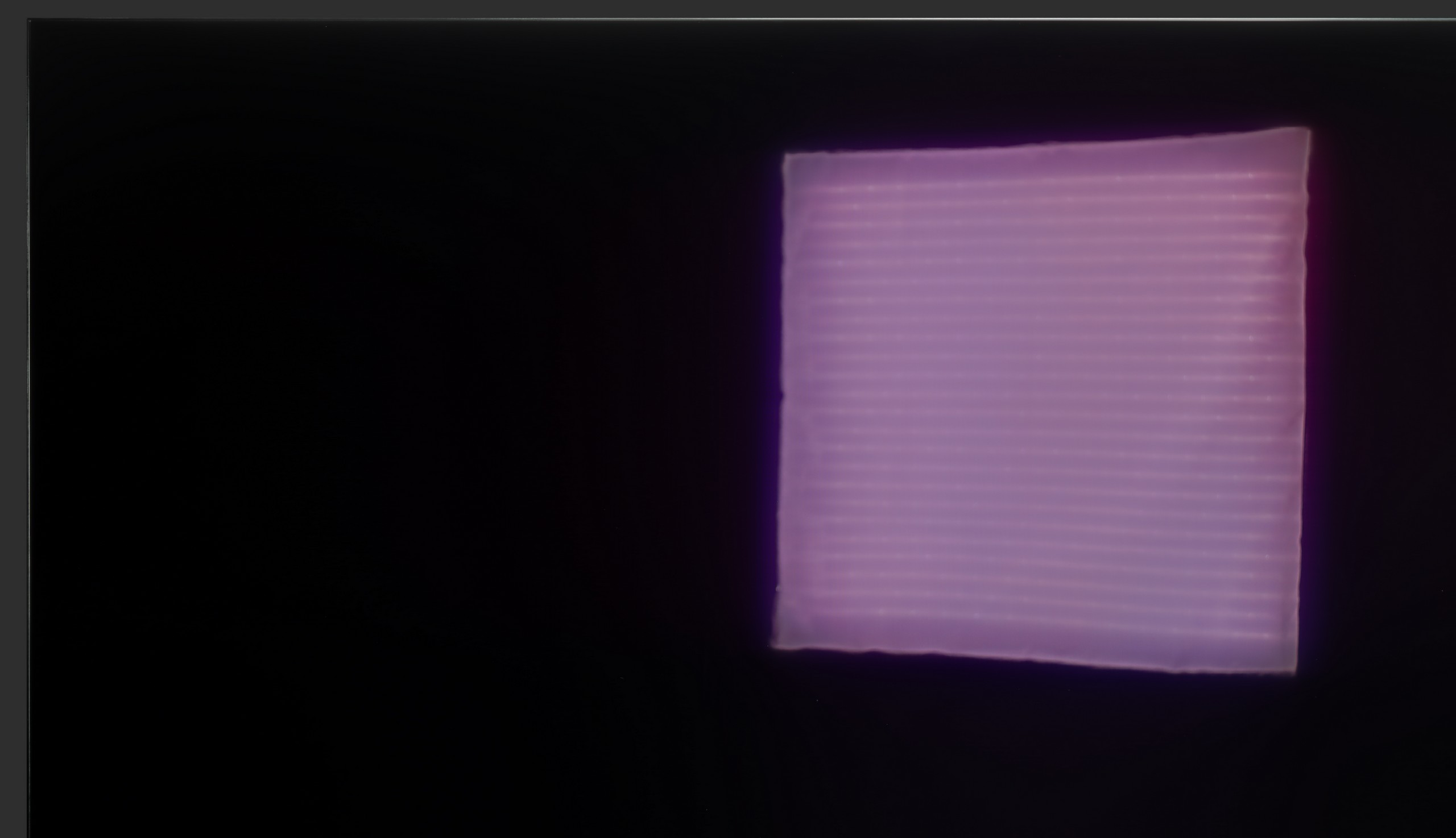

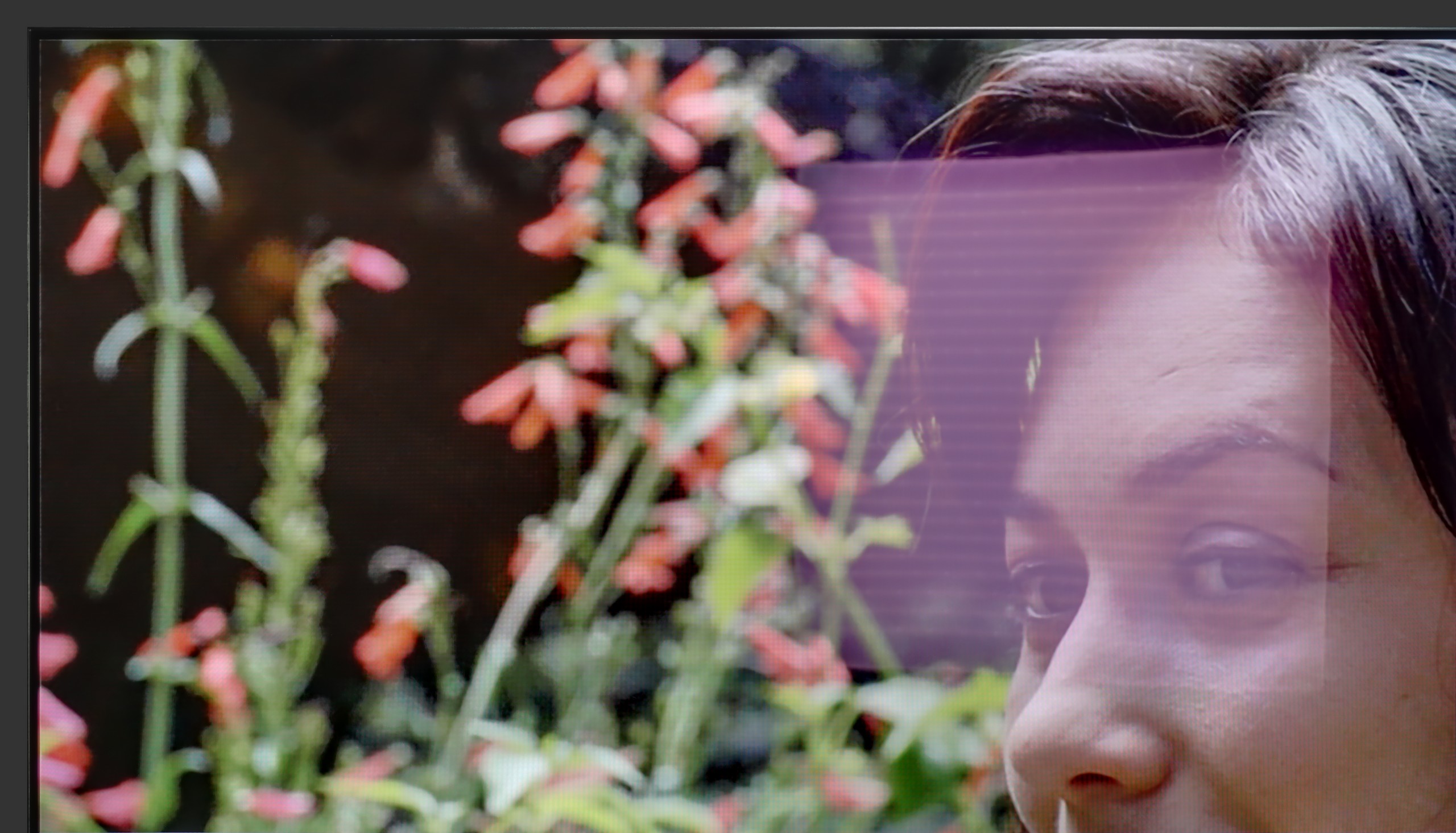
Matrix brightness
Average luminance SDR
SAMSUNG S90F (WOLED): 405 cd/m2
LG 55 B4: 374 cd/m2
The maximum brightness of the TV in SDR materials is 370 nits. For an OLED TV, this is a very good result, allowing for quite comfortable viewing during the day. There are two things worth noting. The first is the rather average handling of reflections caused by the satin finish of the panel, which means that direct light hitting the TV can be quite intrusive. The second issue is the screen brightness at 100% white fill, hovering around 260 nits, which is an outstanding result, as until recently, OLED TVs in this range could "boast" a brightness two times lower. This means that conditions for watching, for example, winter sports, will be very good.
S90F is really bright for an OLED TV. Of course, it shouldn’t be compared to Mini-LED TVs or the brightest high-end OLEDs, but under normal lighting conditions, it’s easy to watch something during the day. The brightness is high enough that there’s no need to close the curtains every time a movie or series is turned on. However, it’s important to remember that the anti-reflective coating on WOLED panels is not the best. Reflections can be noticeable, especially with bright light coming in from the window. In such cases, it’s best to reach for curtains.
Details about the matrix
Subpixel Structure:
Panel uniformity:

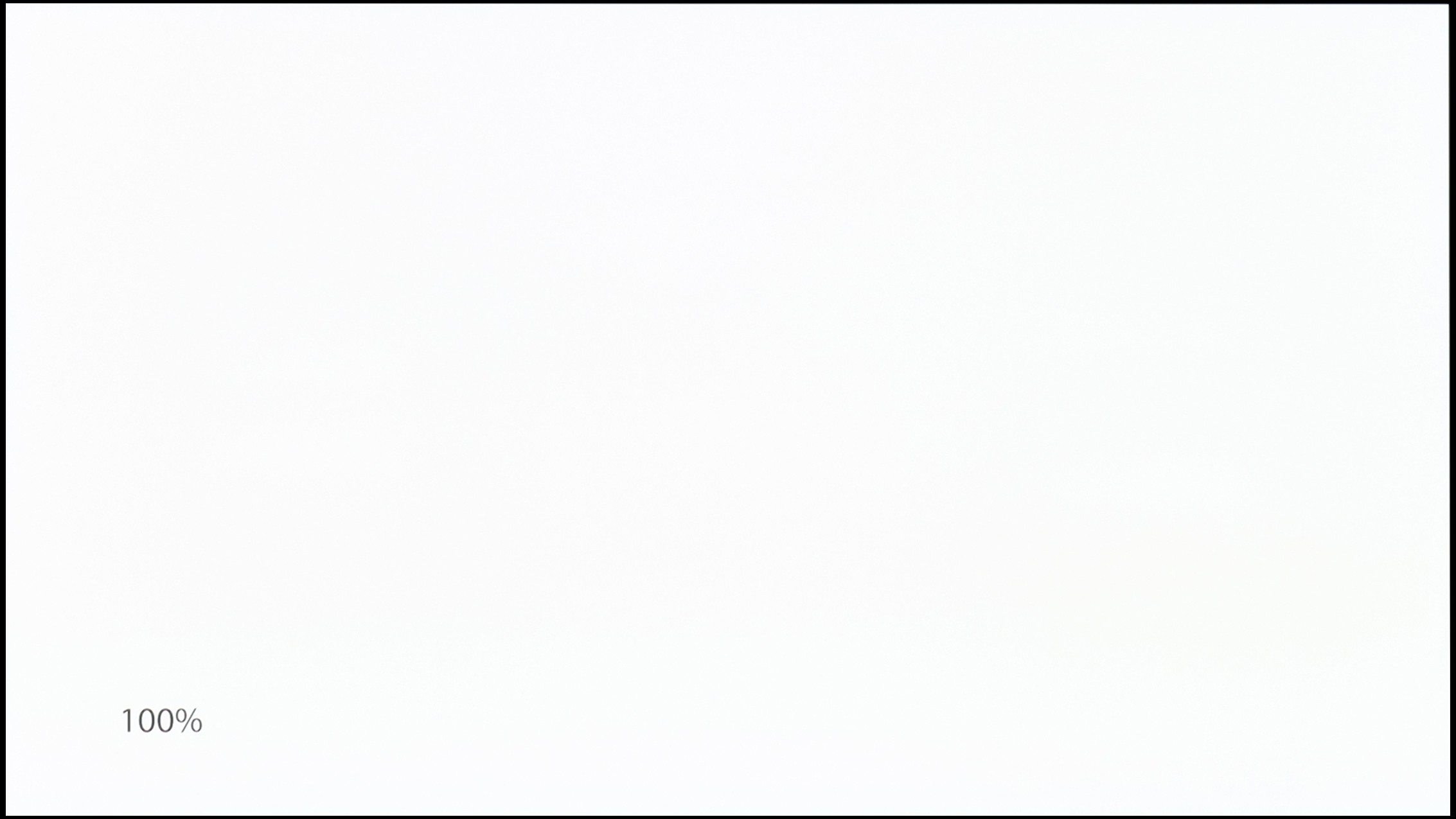
TV features
9/10
7.2/10
- HDMI inputs0 x HDMI 2.0, 4 x HDMI 2.1 48Gbps0 x HDMI 2.0, 4 x HDMI 2.1 48Gbps
- Other inputsToslink (Optical audio), IR (remote)
- OutputsToslink (Optical audio), eARC (HDMI), ARC (HDMI)Toslink (Optical audio), eARC (HDMI), ARC (HDMI)
- Network InterfacesWi-Fi 2.4GHz, Wi-Fi 5GHz, Ethernet (LAN) 100MbpsWi-Fi 2.4GHz, Wi-Fi 5GHz, Ethernet (LAN) 100Mbps
- TV receptionDVB-T, DVB-T2, DVB-S, DVB-S2, DVB-CDVB-T, DVB-T2, DVB-S, DVB-S2, DVB-C
Classic features:
- Recording to USB (terrestrial TV)
- Recording programming
- Picture in Picture (PiP)
- RF remote control (no need to aim at the screen)
- Backlit remote control
- Teletext
- Audio only mode
- Possibility to connect Bluetooth headphones to the TV
- Possibility to simultaneously use Bluetooth headphones and the TV speaker
Smart features:
- AirPlay
- Screen mirroring (Windows Miracast)
- Wyszukiwanie głosowe
- Voice search in native language
- Ability to connect a keyboard and mouse




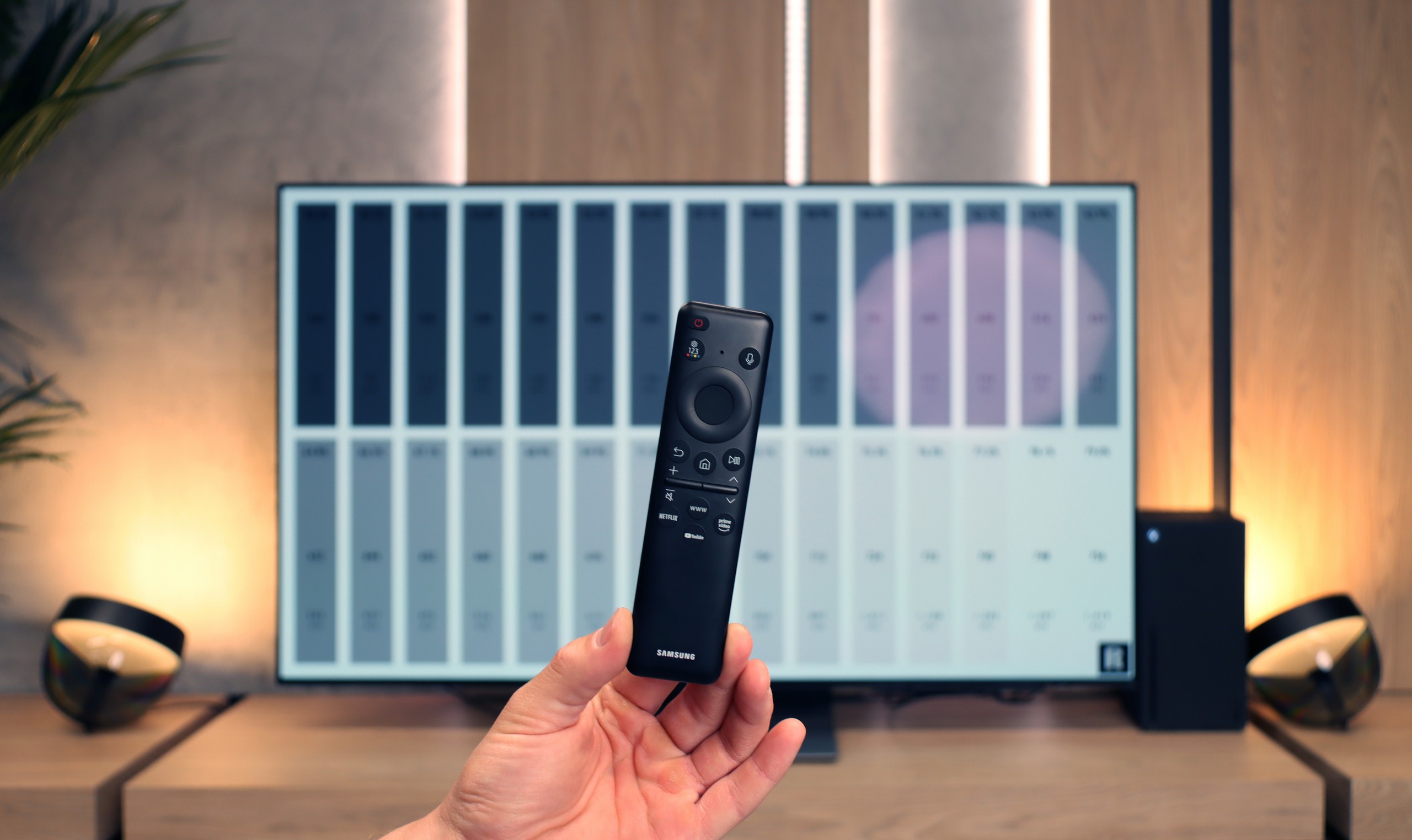
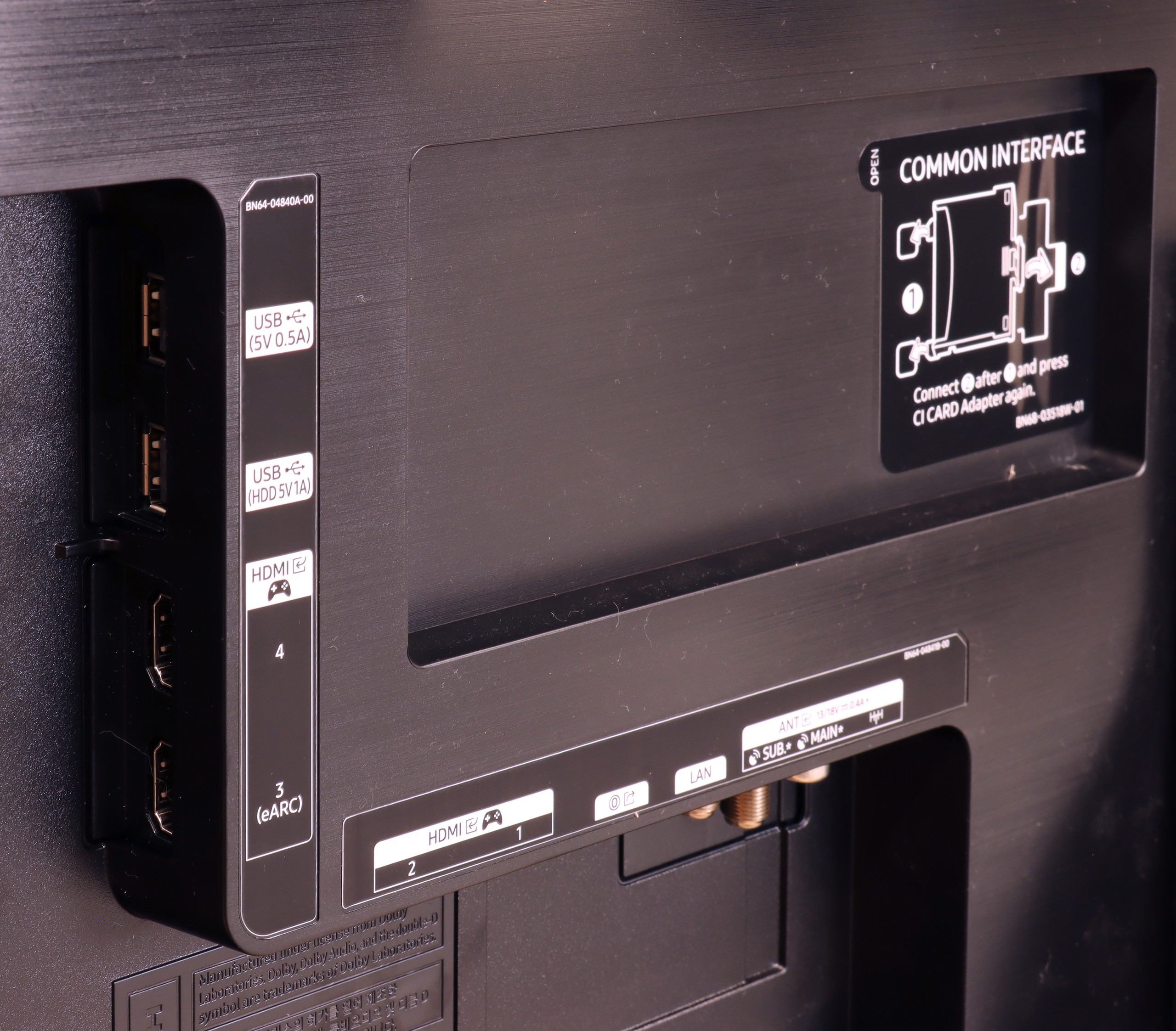
LG B4 uses the well-known proprietary WebOS system that has been around for many years. The system itself offers virtually all the most important applications, and those that are missing can be counted on one hand, such as CDA or KODI.
WebOS also features a highly valued ability to perform operations using a cursor that appears when the remote is in motion. The convenience of such a function is invaluable when entering queries or passwords for portals. WebOS, like most systems, also supports features such as screen mirroring, AirPlay, voice search in Polish, and the ability to connect headphones via Bluetooth. More down-to-earth things, WebOS allows us to use headphones and the TV's speakers simultaneously, which will surely be a great assistance for people with hearing disabilities. Among the more interesting features that will primarily appeal to sports fans, there is the option to turn on an alert informing about an upcoming match, ensuring that we never miss a broadcast. The home panel also deserves praise, allowing control of all smart devices connected to the home network. For example, the end of a washing cycle will be signalled by a notification in the top right corner.
In summary, the WebOS system, although less known and having certain limitations compared to Android TV, offers stable and fast operation and supports most features that users might need. It is a solid solution for those looking for a simple and effective operating system in a television.
Samsung S90F is equipped with a range of classic TV features, such as EPG, CI module, and headphone support, but there’s also more to it. Thanks to the presence of several tuners, the TV offers a picture-in-picture (PiP) function – very useful, for example, when we are watching one match but want to check the score of another match happening simultaneously. It's a pity that Samsung has completely abandoned the USB recording feature for some time now, but this is partially compensated by good integration with decoders and other devices. The remote – while small and lacking a numeric keypad – allows you to control multiple devices connected to the TV. You can easily manage a decoder, amplifier, console, or other gear with it – all without needing to reach for several remotes.
As for the Smart TV system – Tizen on the S90F operates very smoothly, which is not a given in cheaper models with this system. The system itself is extensive and offers plenty of features – we have screen mirroring, AirPlay, Bluetooth device support, and quite a few options related to smart home functionality, such as controlling bulbs or other smart devices directly from the TV. However, it’s important to remember that Tizen is a closed system, so when it comes to apps – we are limited to what we find in the Samsung store. And while it is quite extensive, it doesn’t match the flexibility of the Google TV platform. It’s worth keeping this in mind if you have specific needs for niche applications.
Playing files from USB
8.5/10
8/10
Supported photo formats:
Maximum photo resolution:

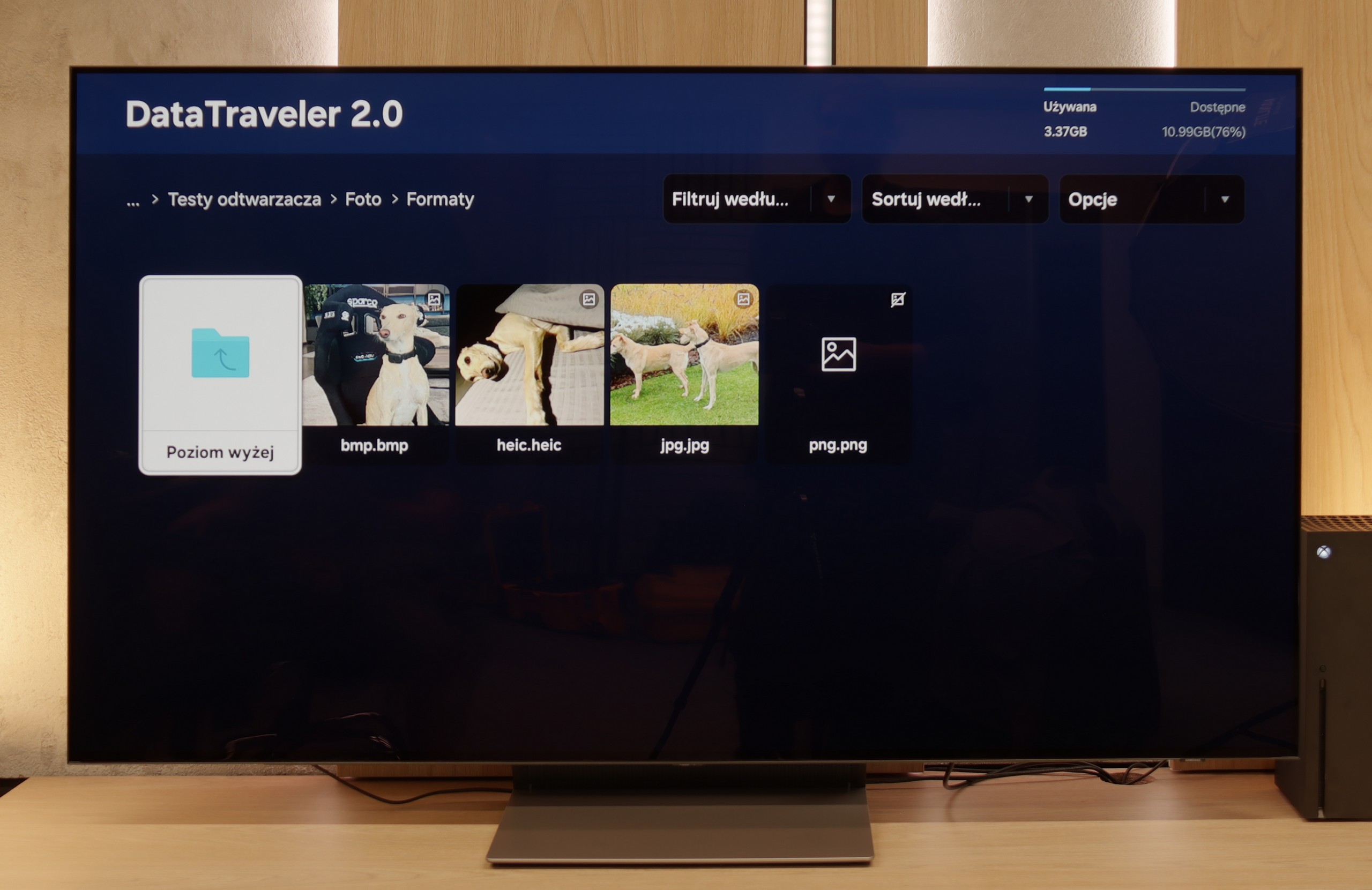
The default file player in LG B4 definitely handles most photos quite well, although it's surprising that some equally popular ones are missing. We can successfully play videos recorded in practically all the most popular formats, including Dolby Vision. The only codec that LG B4 won’t play is H.266 VVC, although this is currently rather unused. However, it’s worth noting the supported photo formats, which are just two: JPEG and PNG. Apple phone users may feel disappointed by the lack of support for the HEIC format, which is the default format when taking photos. The remedy for this is to use the built-in AirPlay feature. We should also mention the lack of TXT subtitle support.
The built-in media player in the S90F is alright and supports quite a few popular formats. Unfortunately, during testing – once again – we encountered issues, despite the manufacturer's claims. The television did not play some formats that are supposedly supported, such as HEIC photos (Apple's version), or SRT and SUB subtitle files. In everyday use for most people, such a player will be sufficient to play a movie from a USB drive, but it’s worth keeping in mind that surprises may occur. Perhaps the situation will be improved in future updates, but at the time of writing this review – it works as it works.
Apps
8.7/10
8.7/10














































Sound
7.1/10
7.4/10
- Maximum volume--
- Dolby Digital Plus 7.1
- Dolby True HD 7.1
- Dolby Atmos in Dolby Digital Plus (JOC)
- Dolby Atmos in Dolby True HD
- DTS:X in DTS-HD MA
- DTS-HD Master Audio
The audio system built into the LG OLED B4 can be considered quite decent. We can say that it holds up fairly well in its price range. The bass is quite noticeable, but it doesn't overpower the other frequencies. It can be said that the sound is reasonably well balanced. We believe that those opting for this class of display are, or will be, in possession of an appropriate audio system. Therefore, the presence of DTS-HD Master Audio and Dolby Atmos codecs is not insignificant.
The S90F plays really quite nicely, with noticeable bass and pretty good dynamics. A definite plus is the support for Dolby Atmos, which allows the TV to sound a bit more “spatial” – of course, as much as the built-in 2.1 set allows 😉. Unfortunately, as is often the case with Samsung, it lacks support for the DTS:X format. So, if you want to take advantage of its capabilities, you'll need to connect your audio equipment directly to the amplifier, rather than to the TV itself – otherwise, it just won't work.


